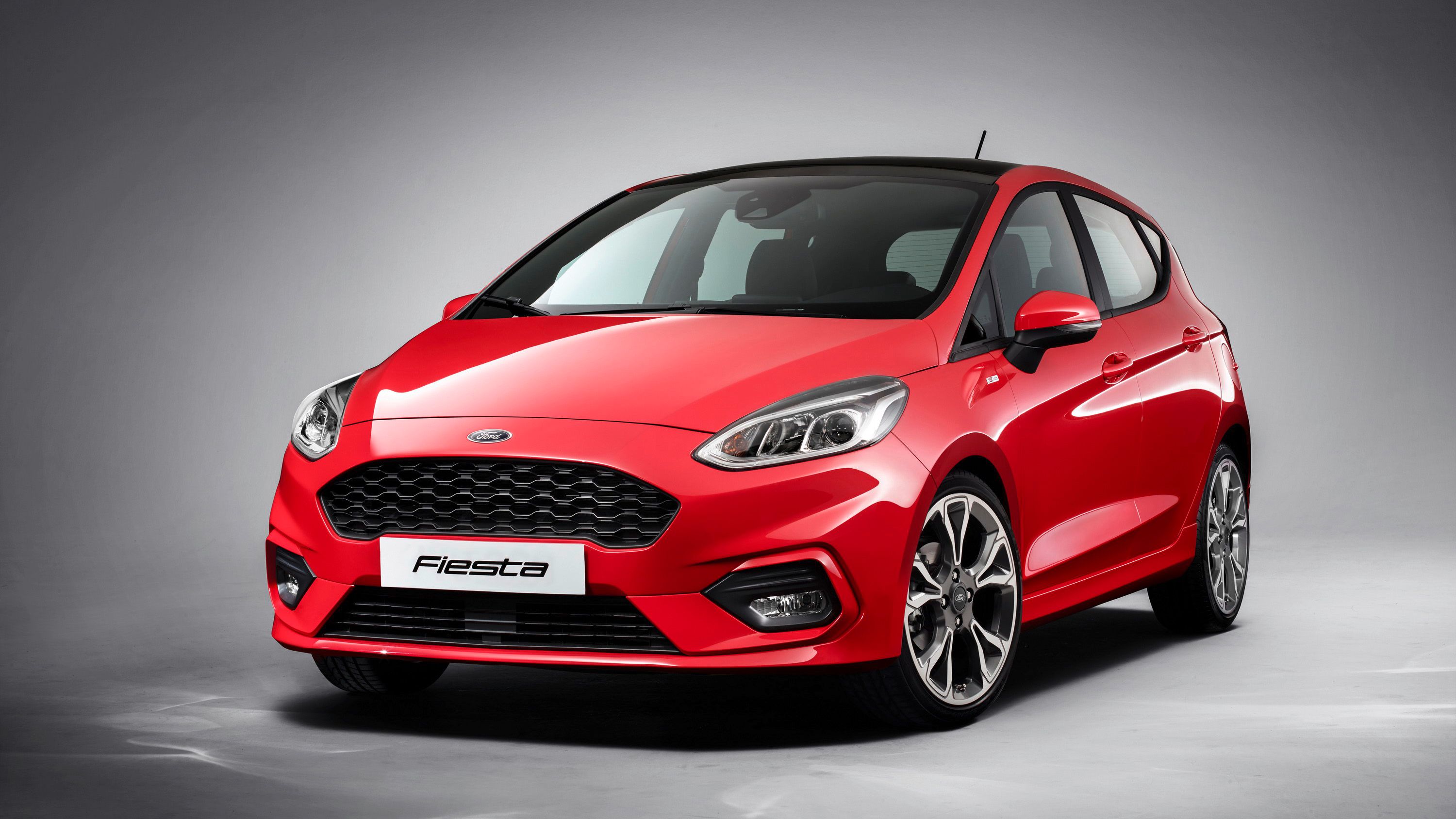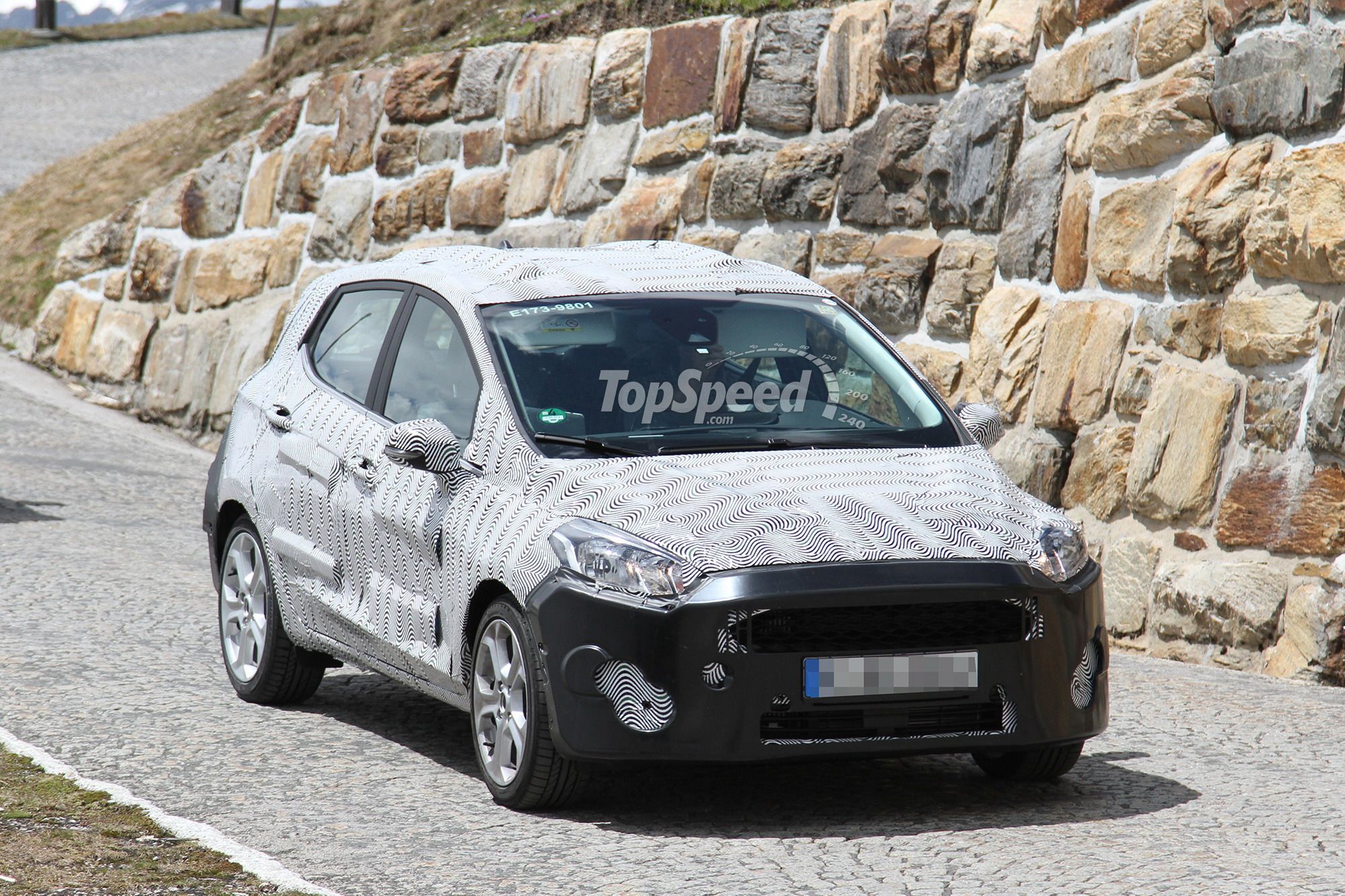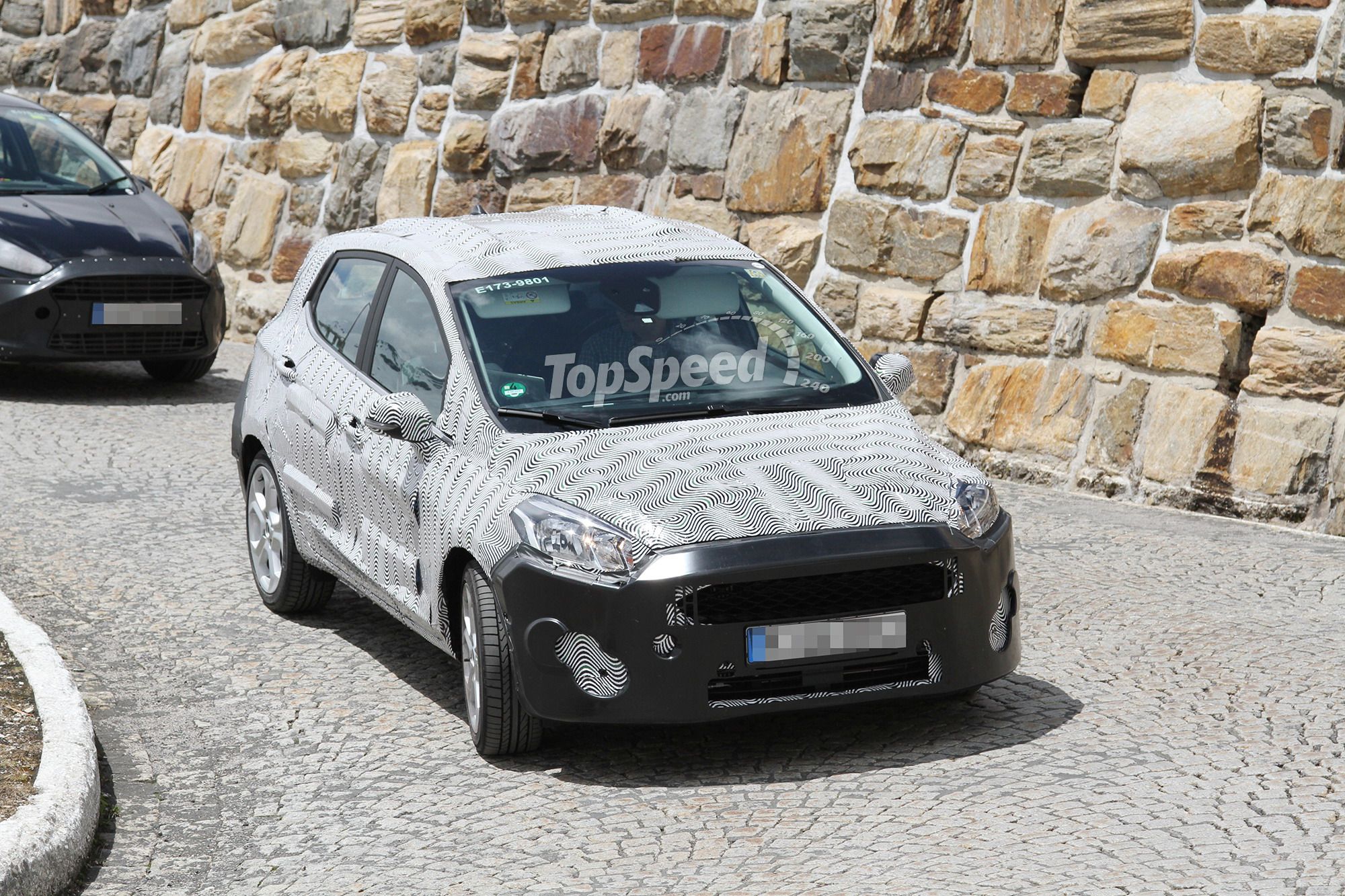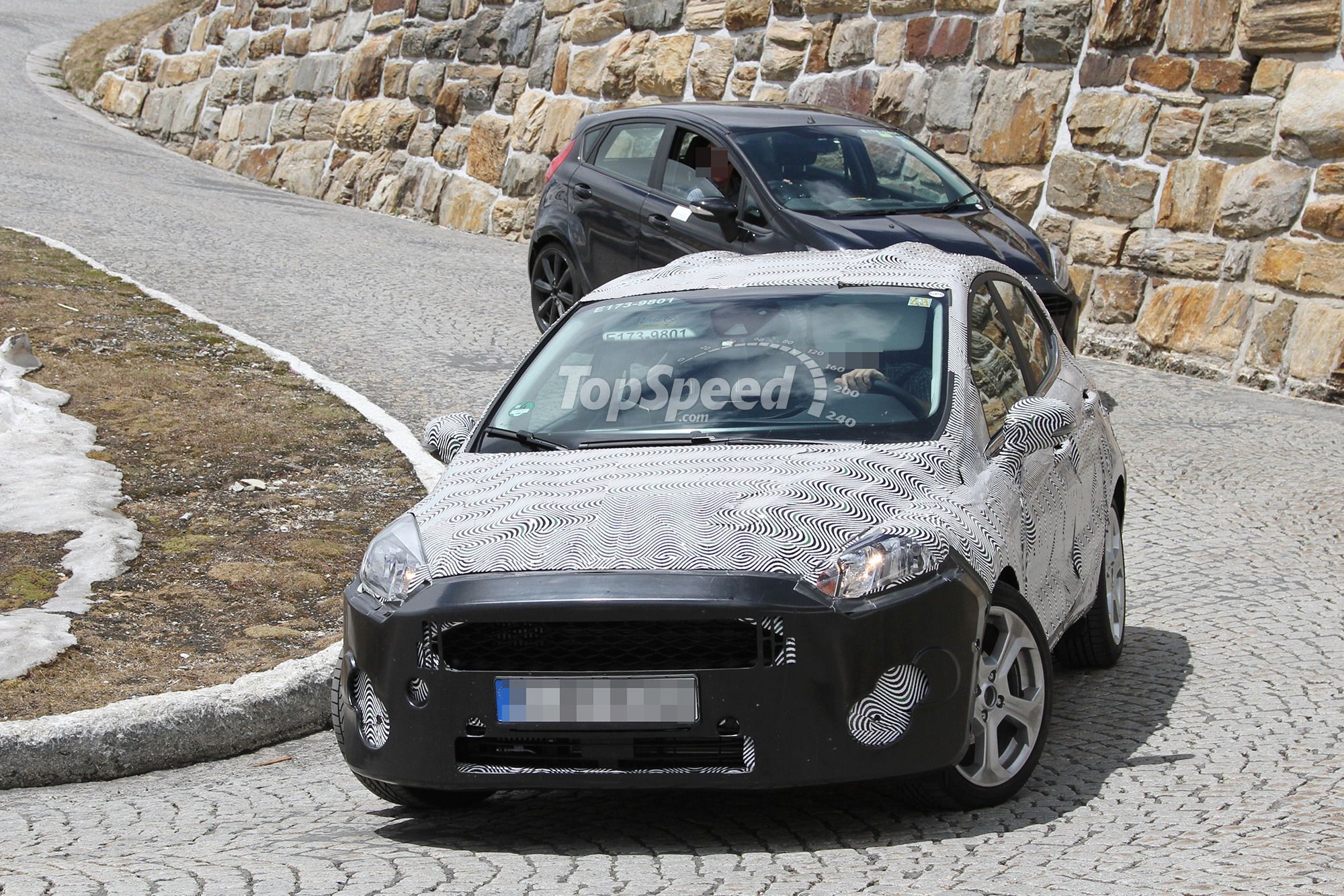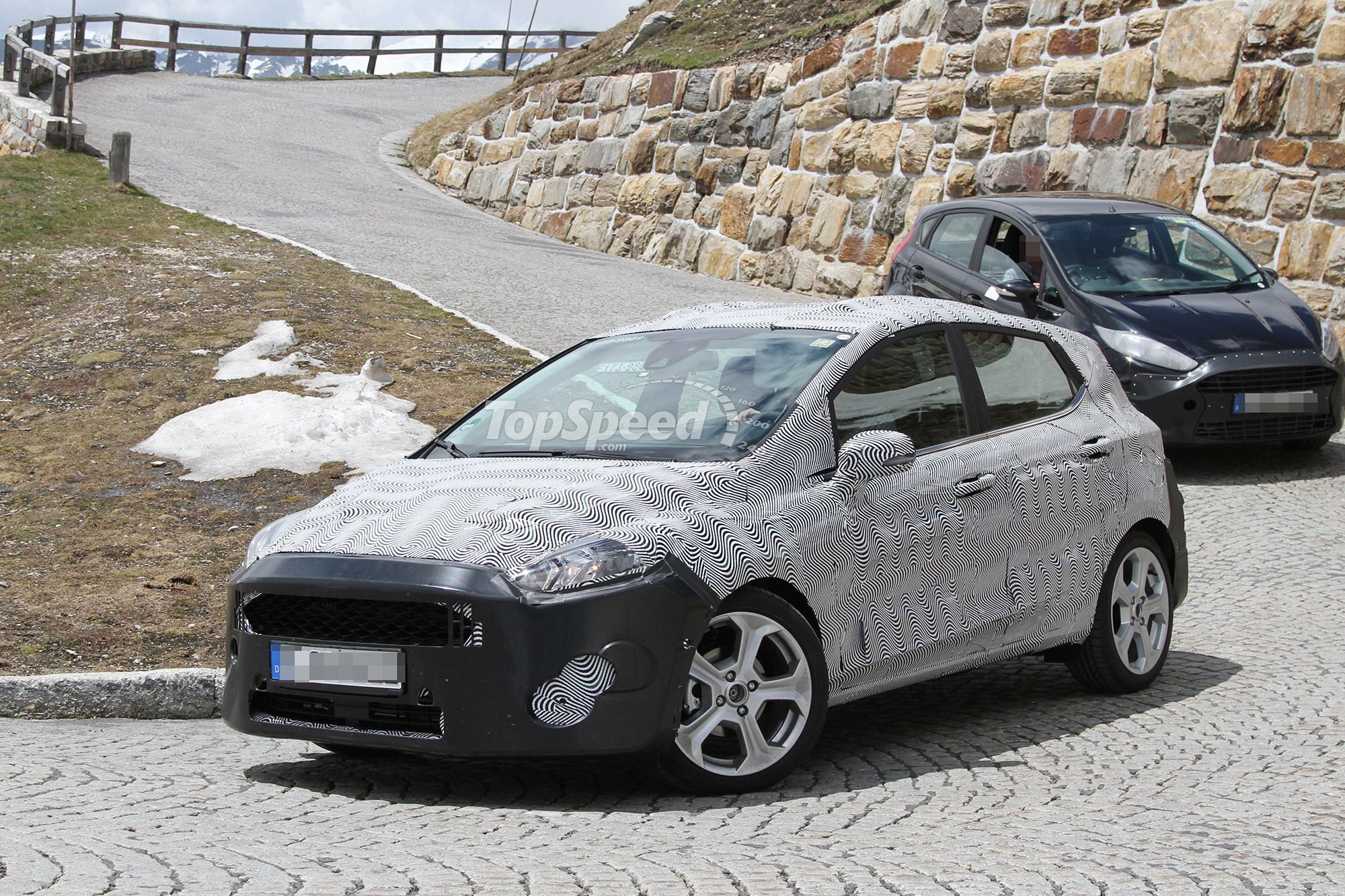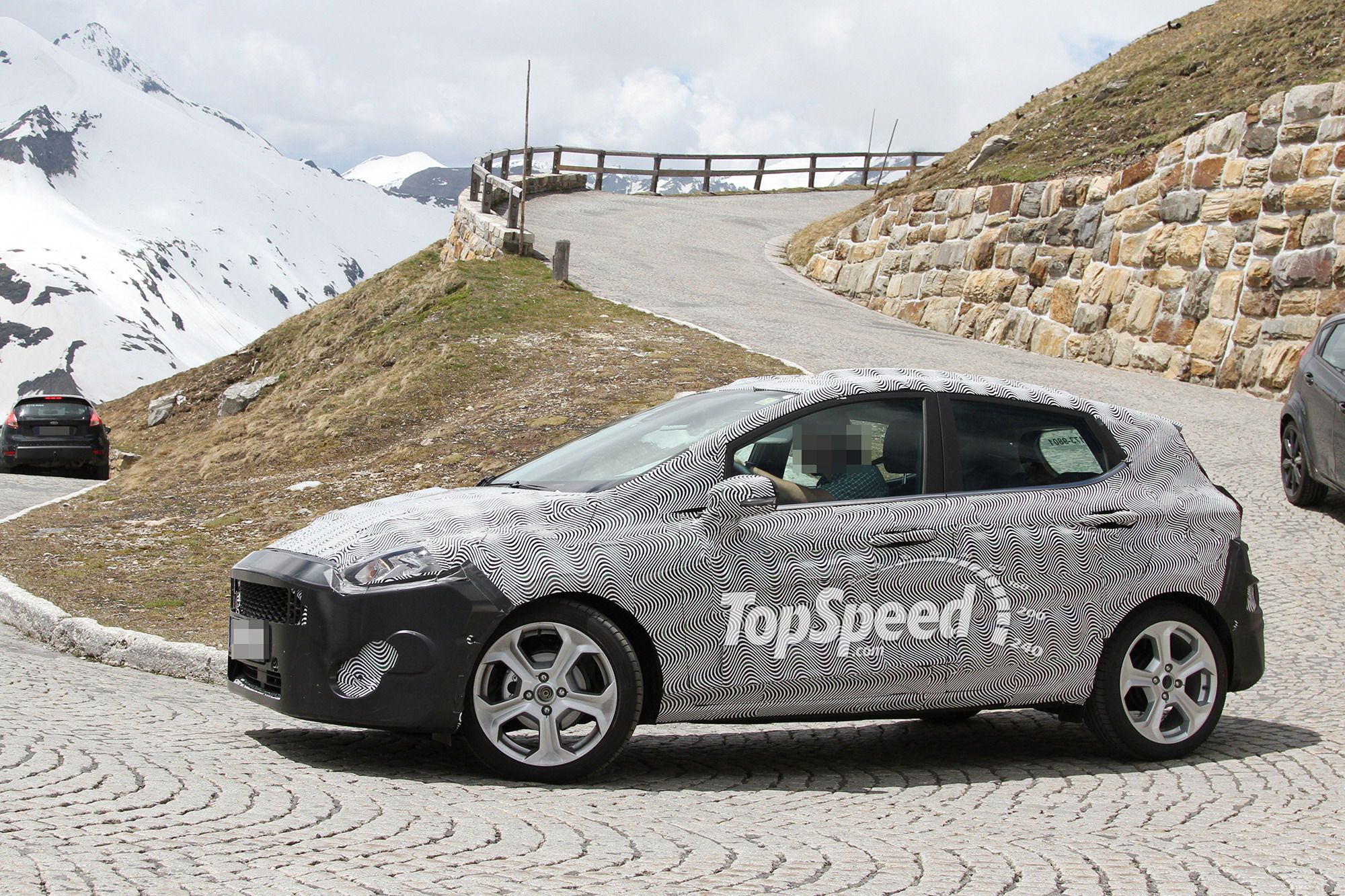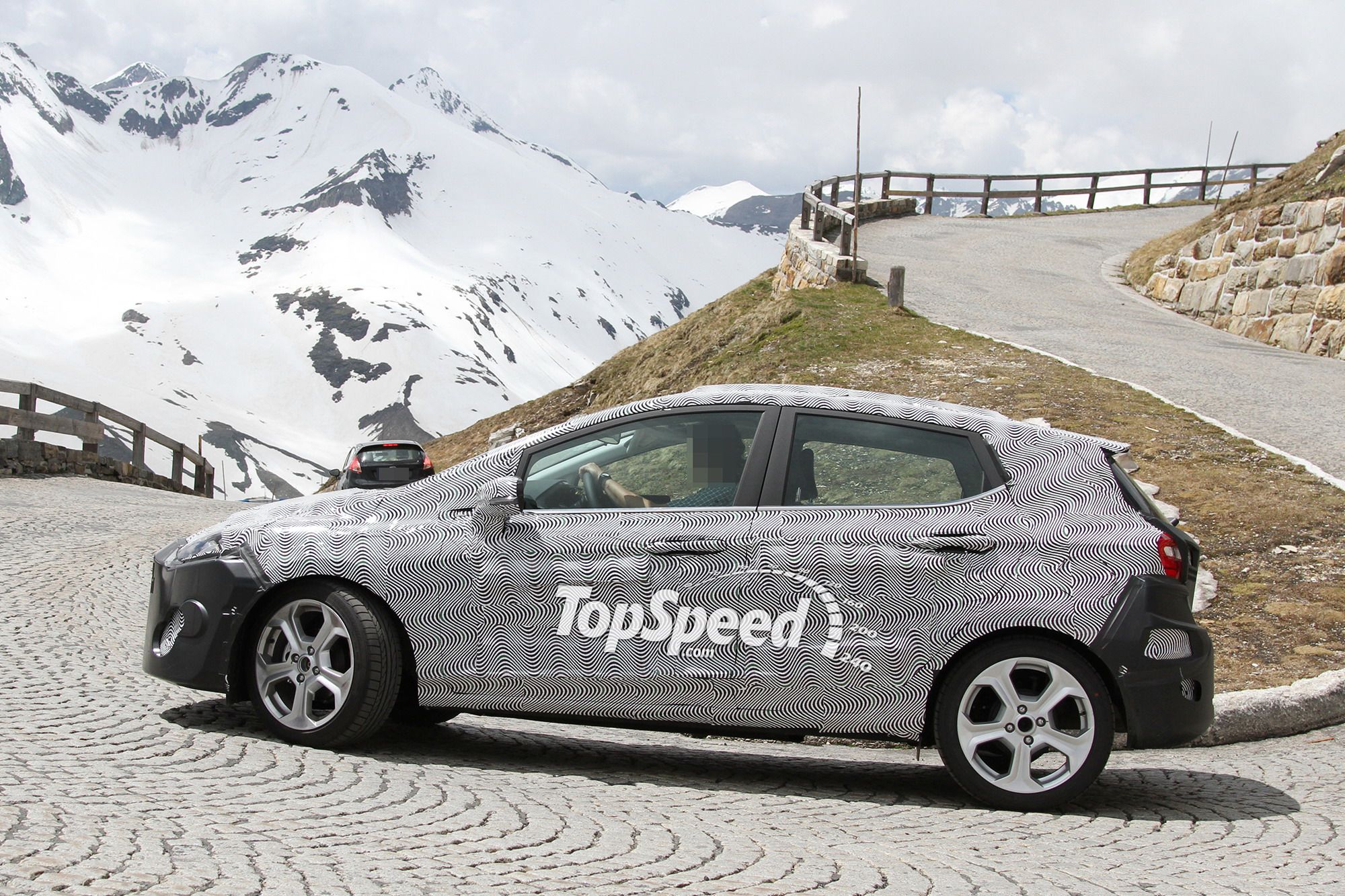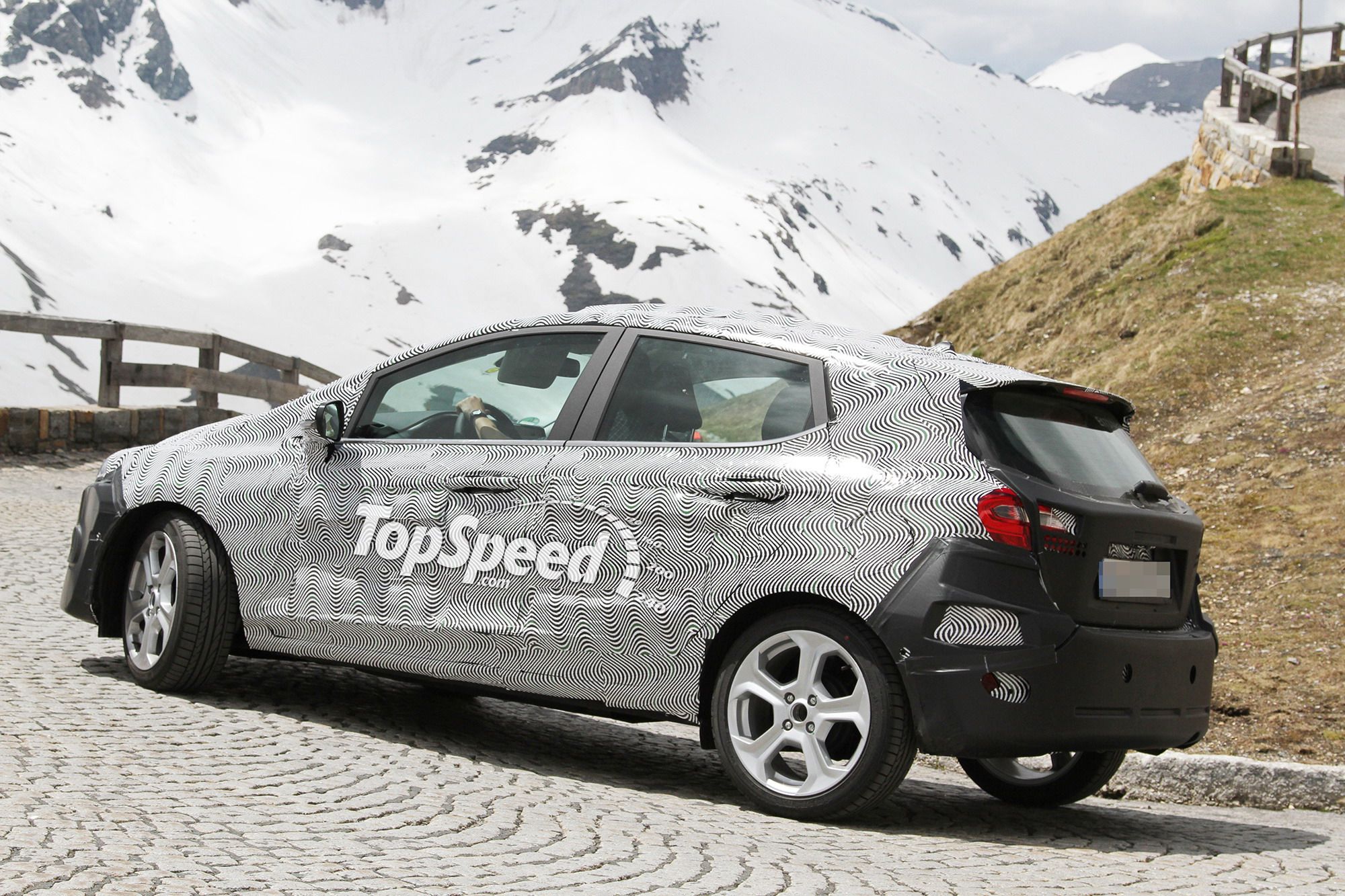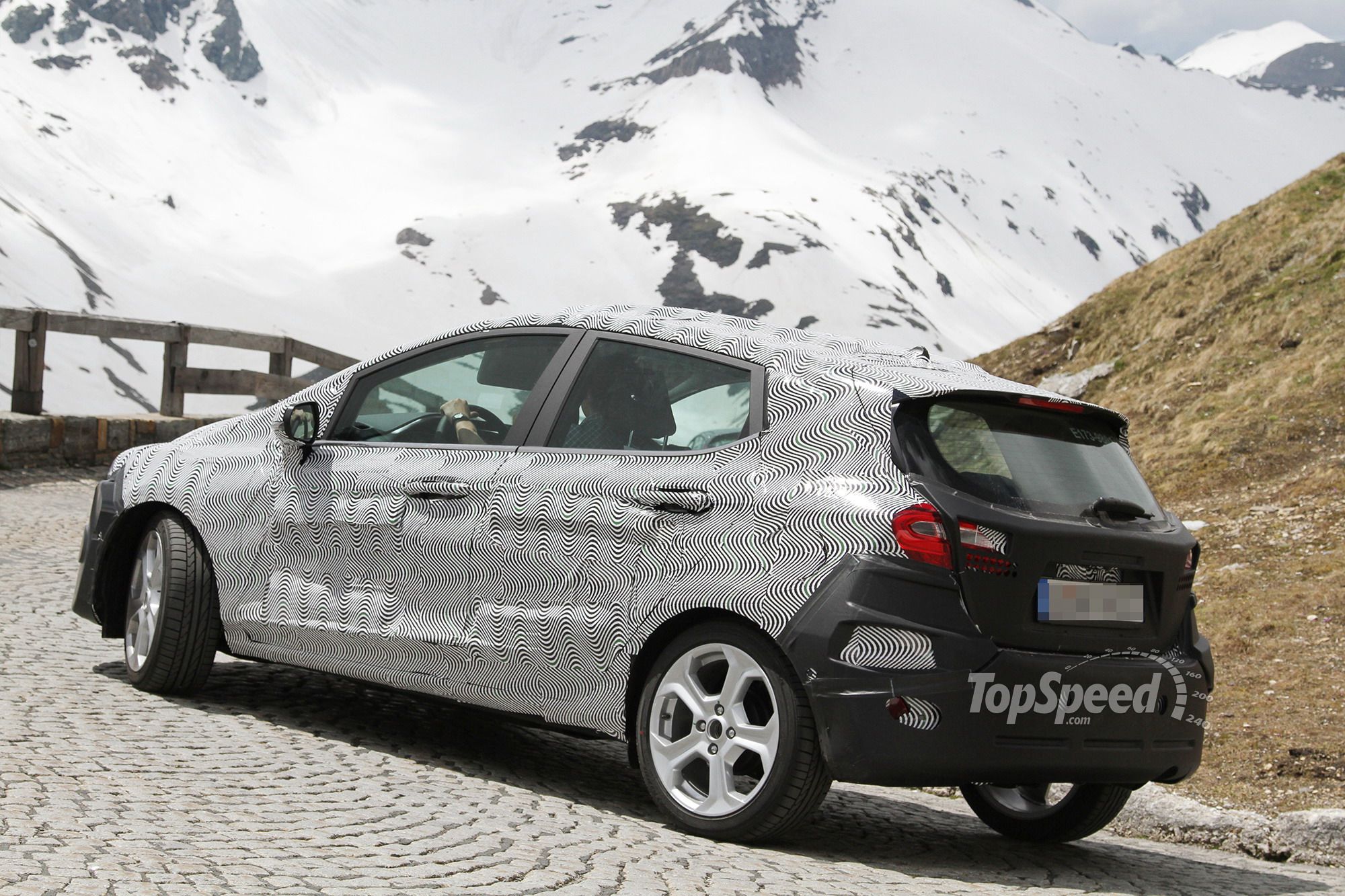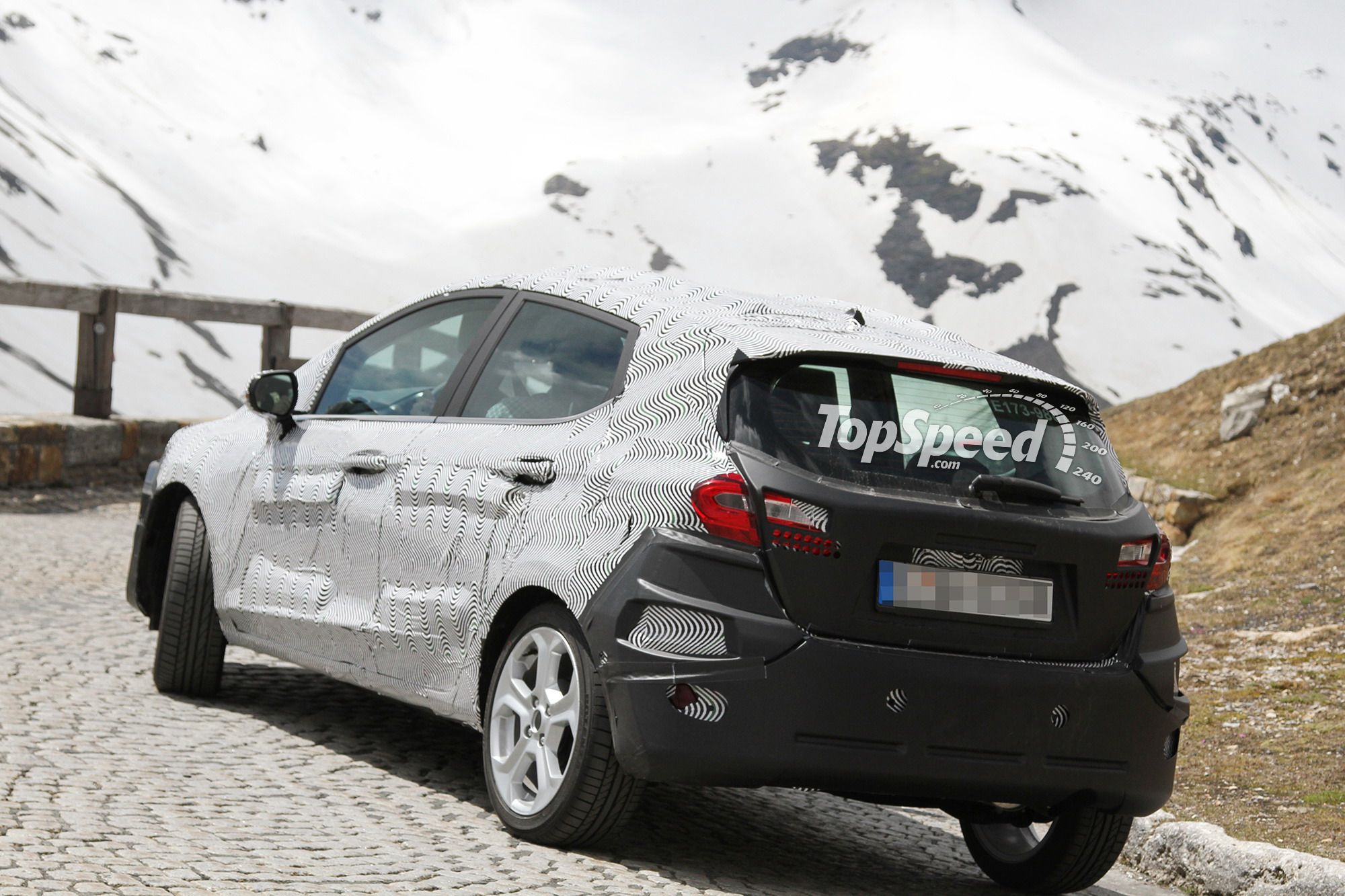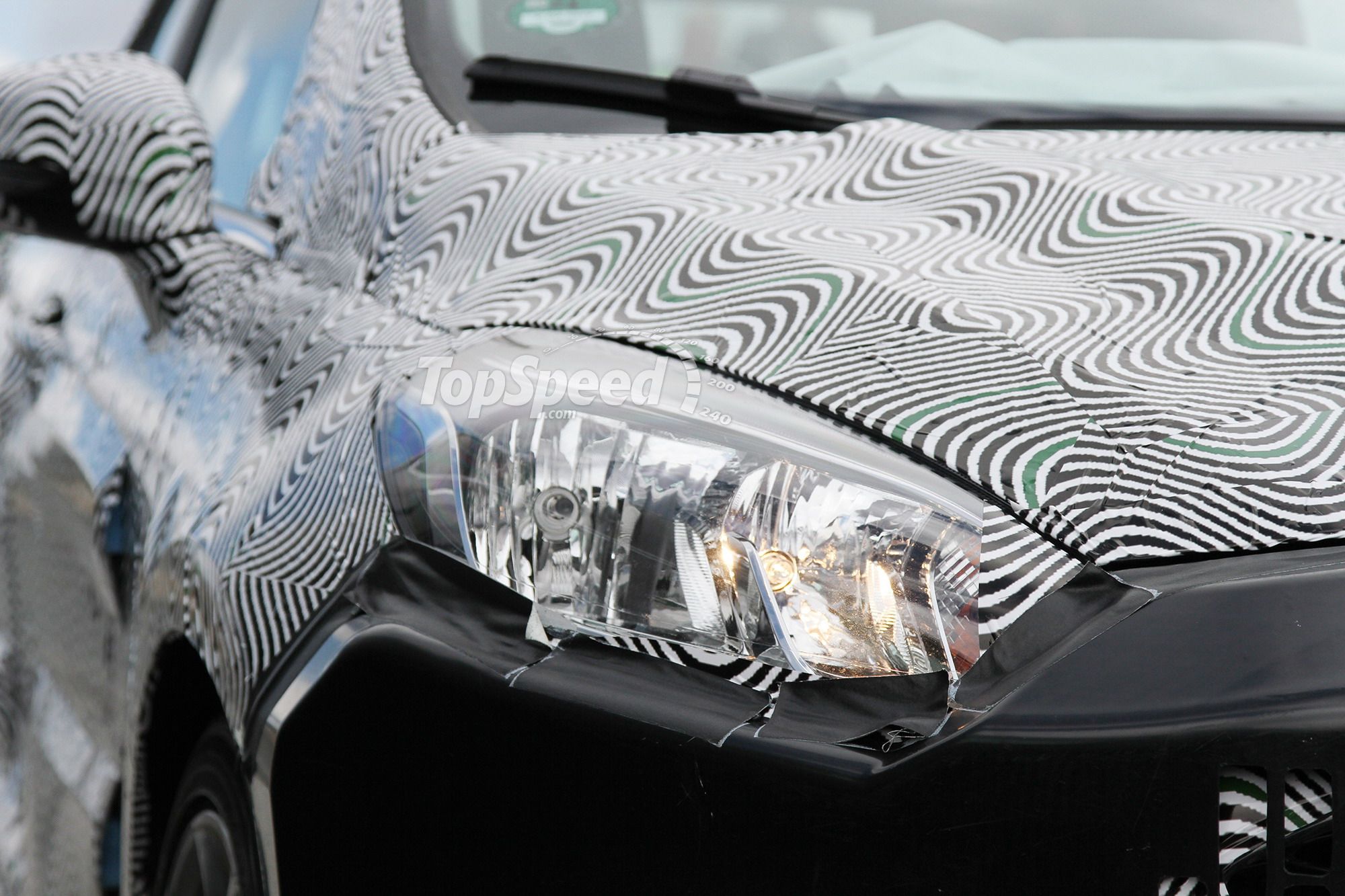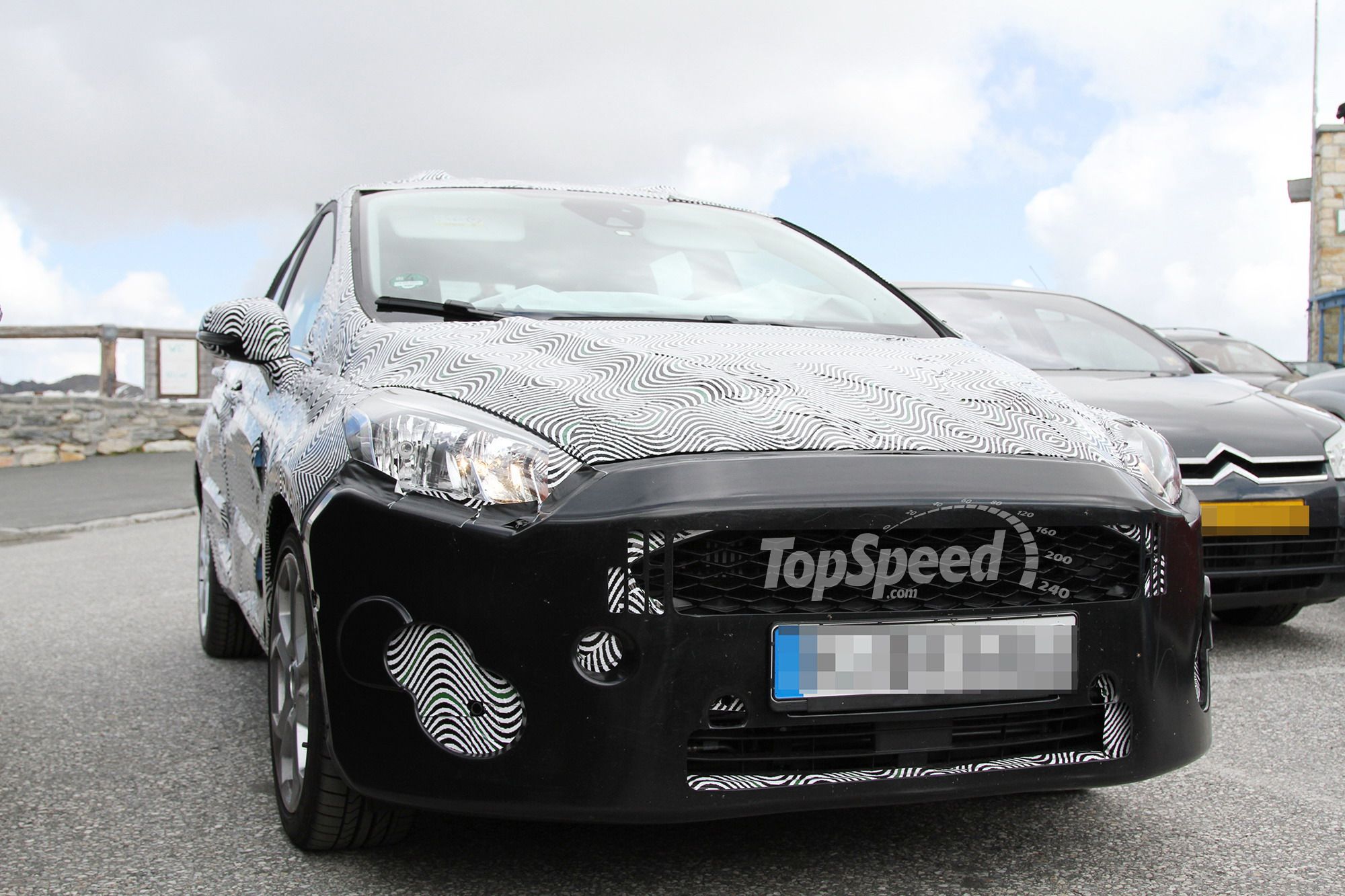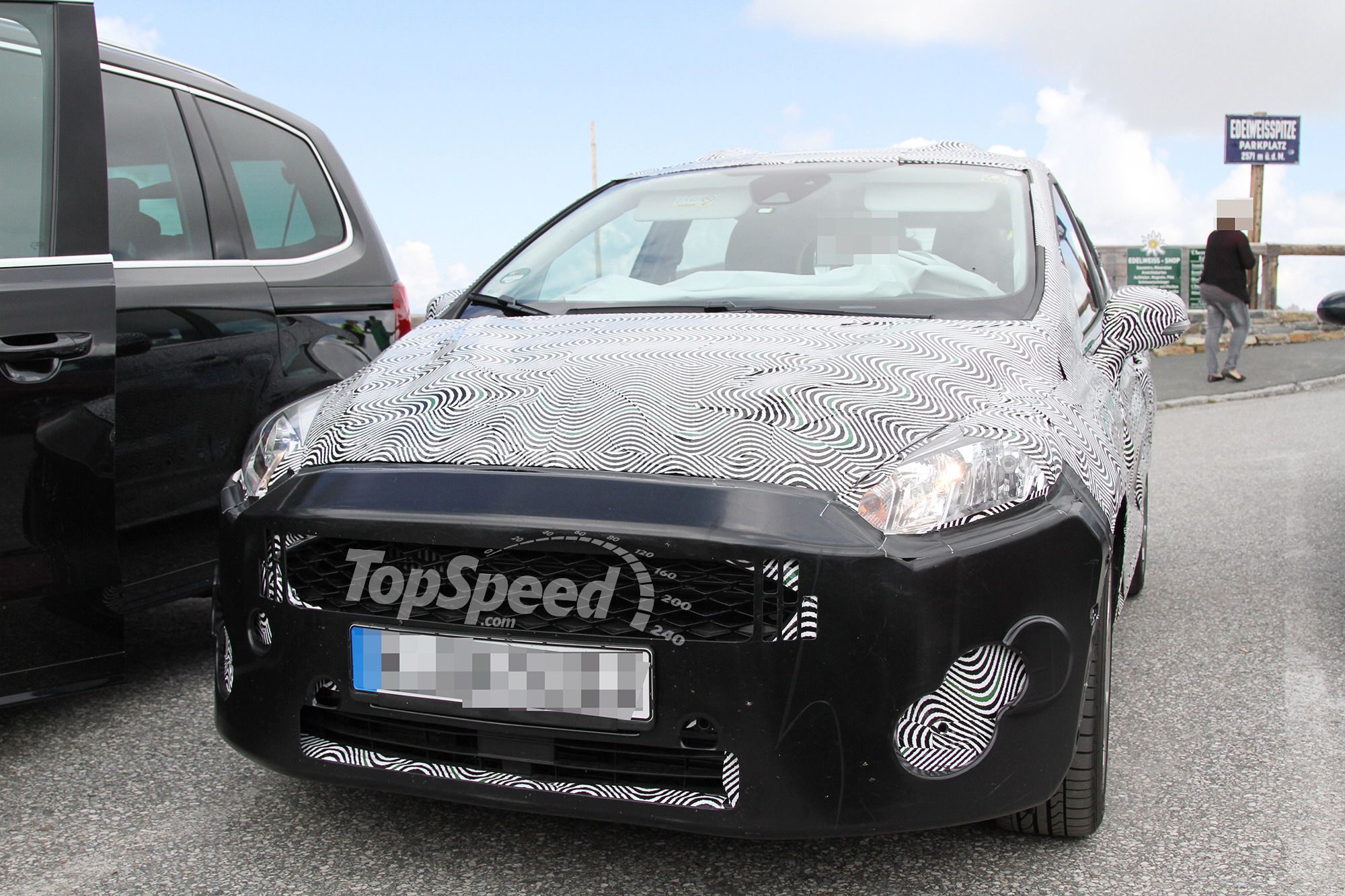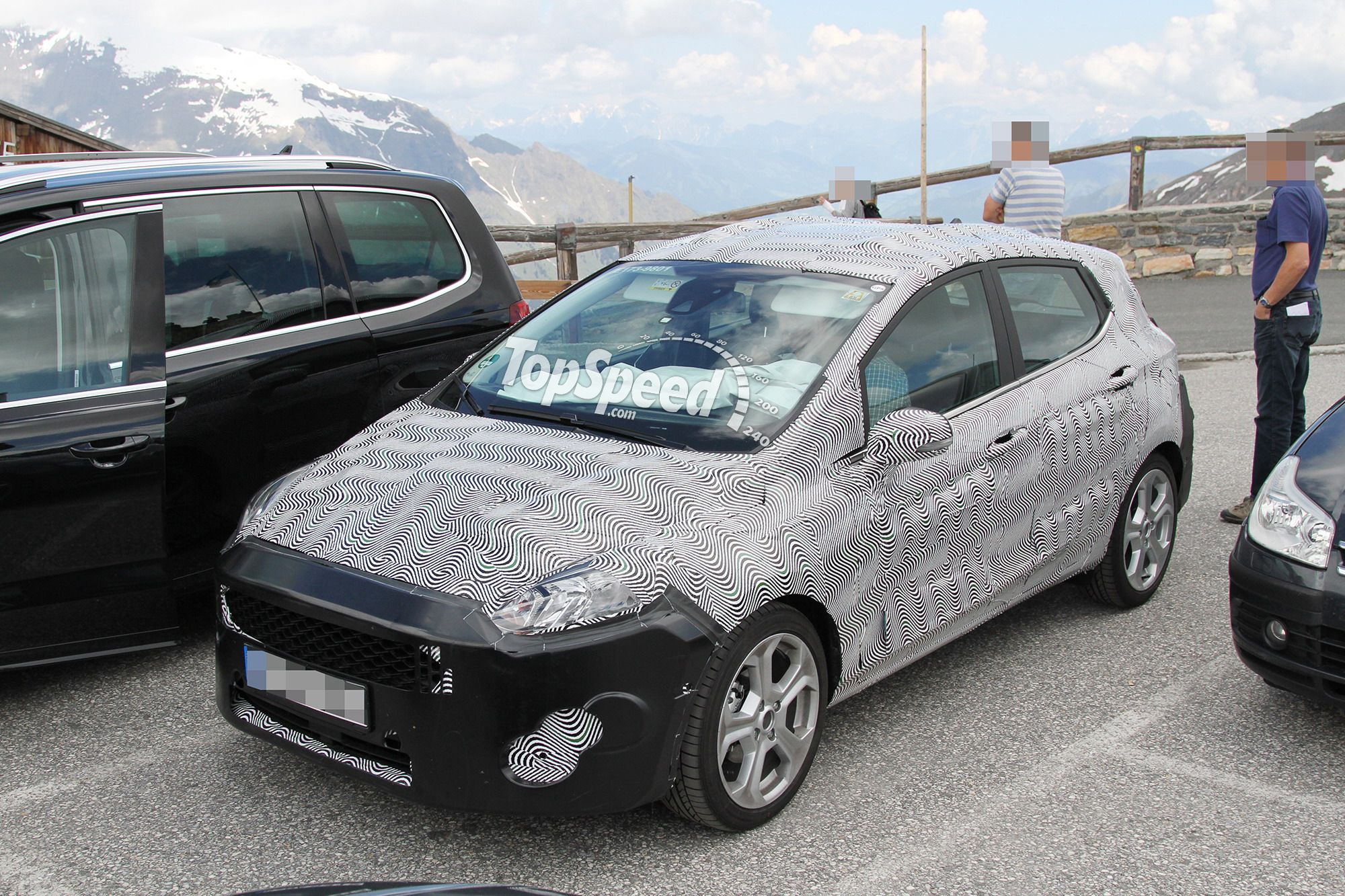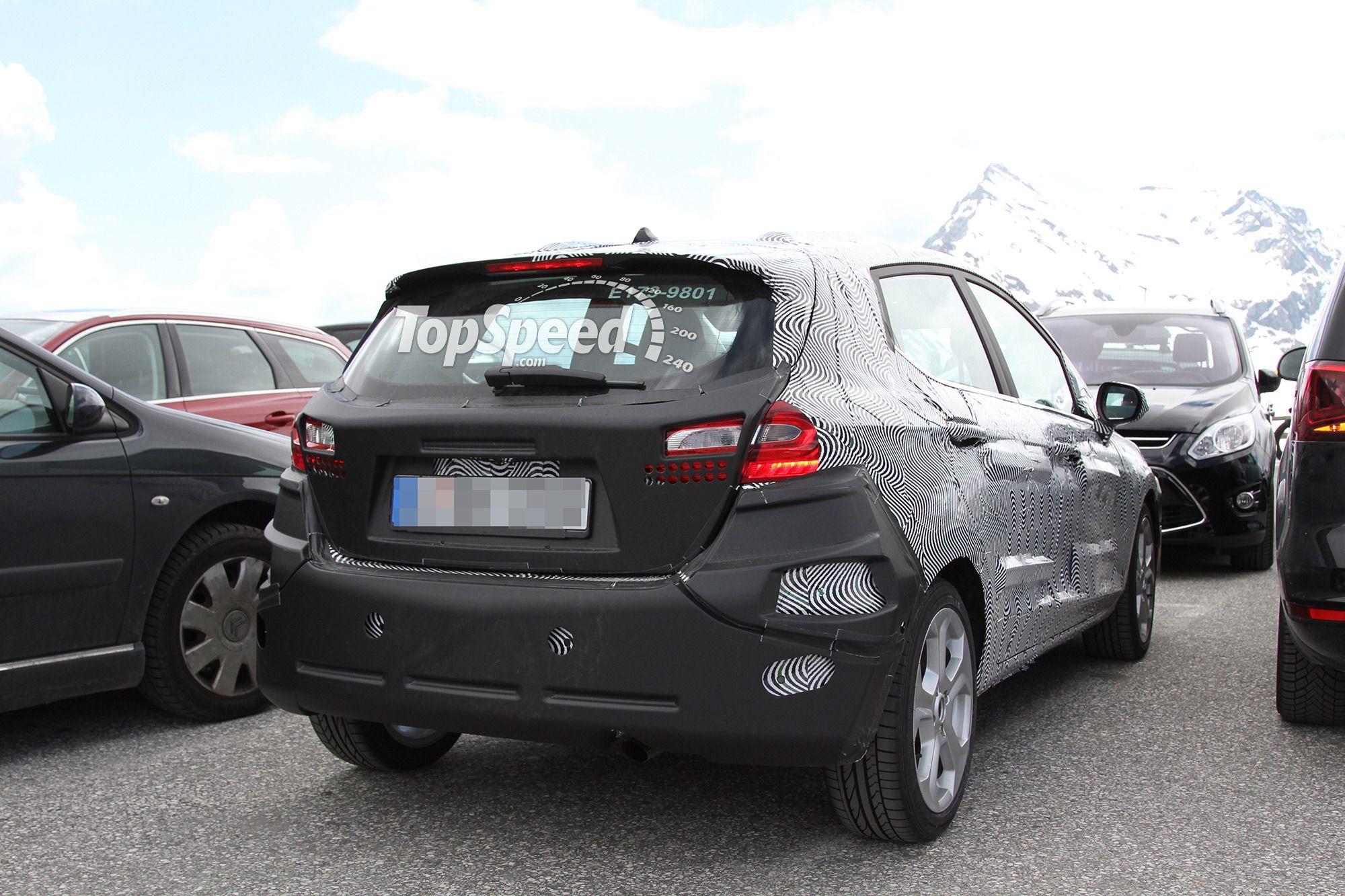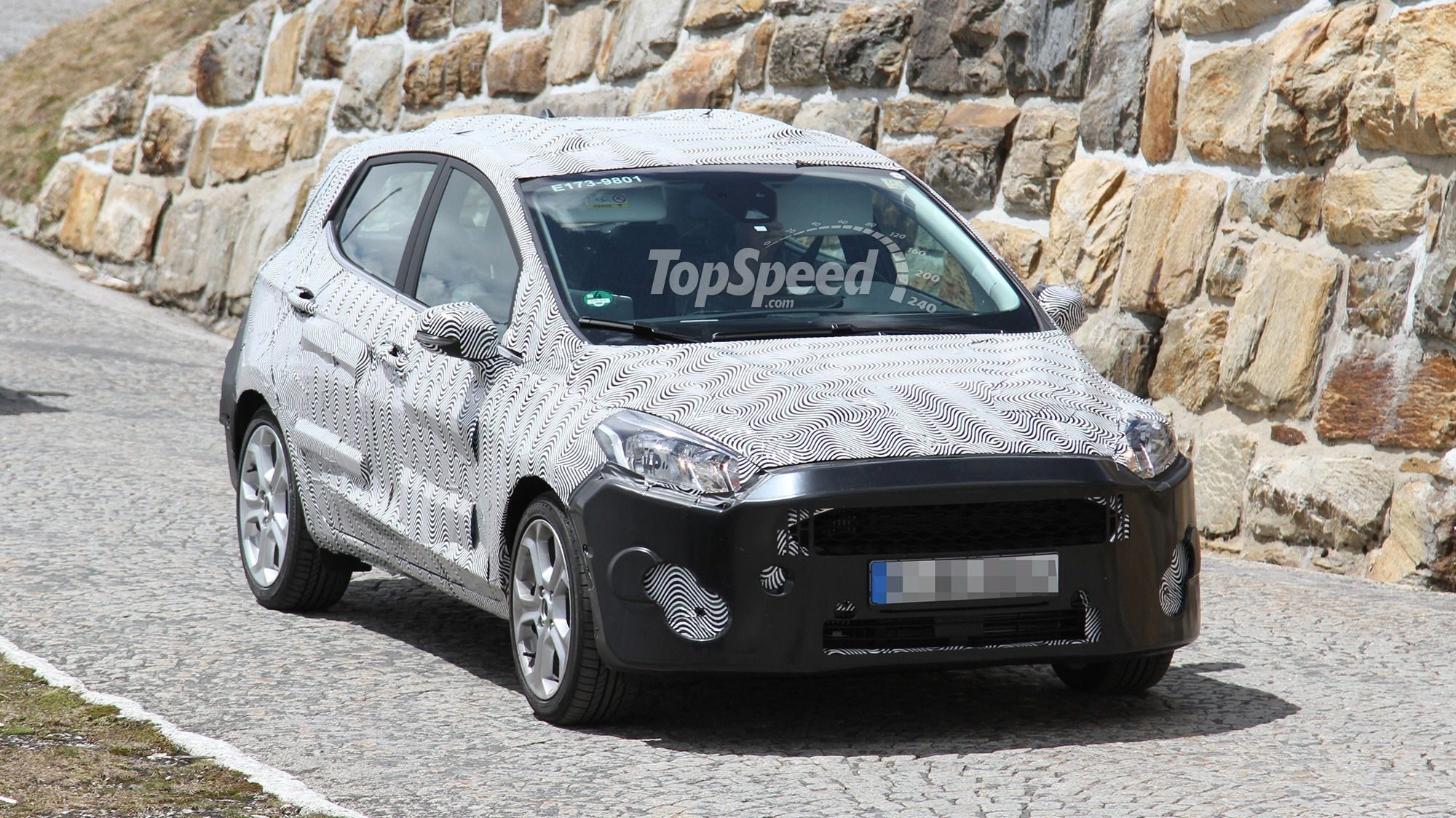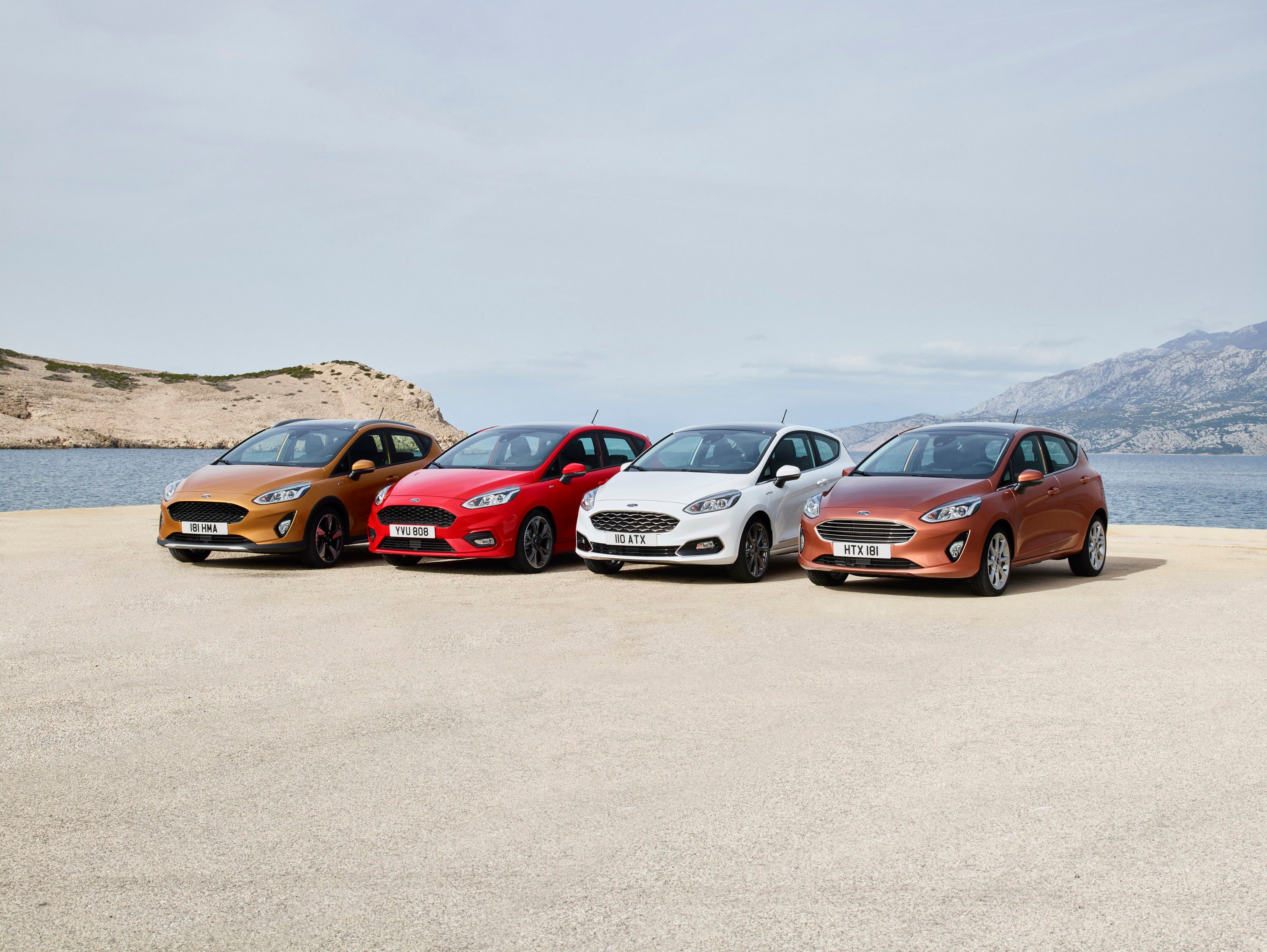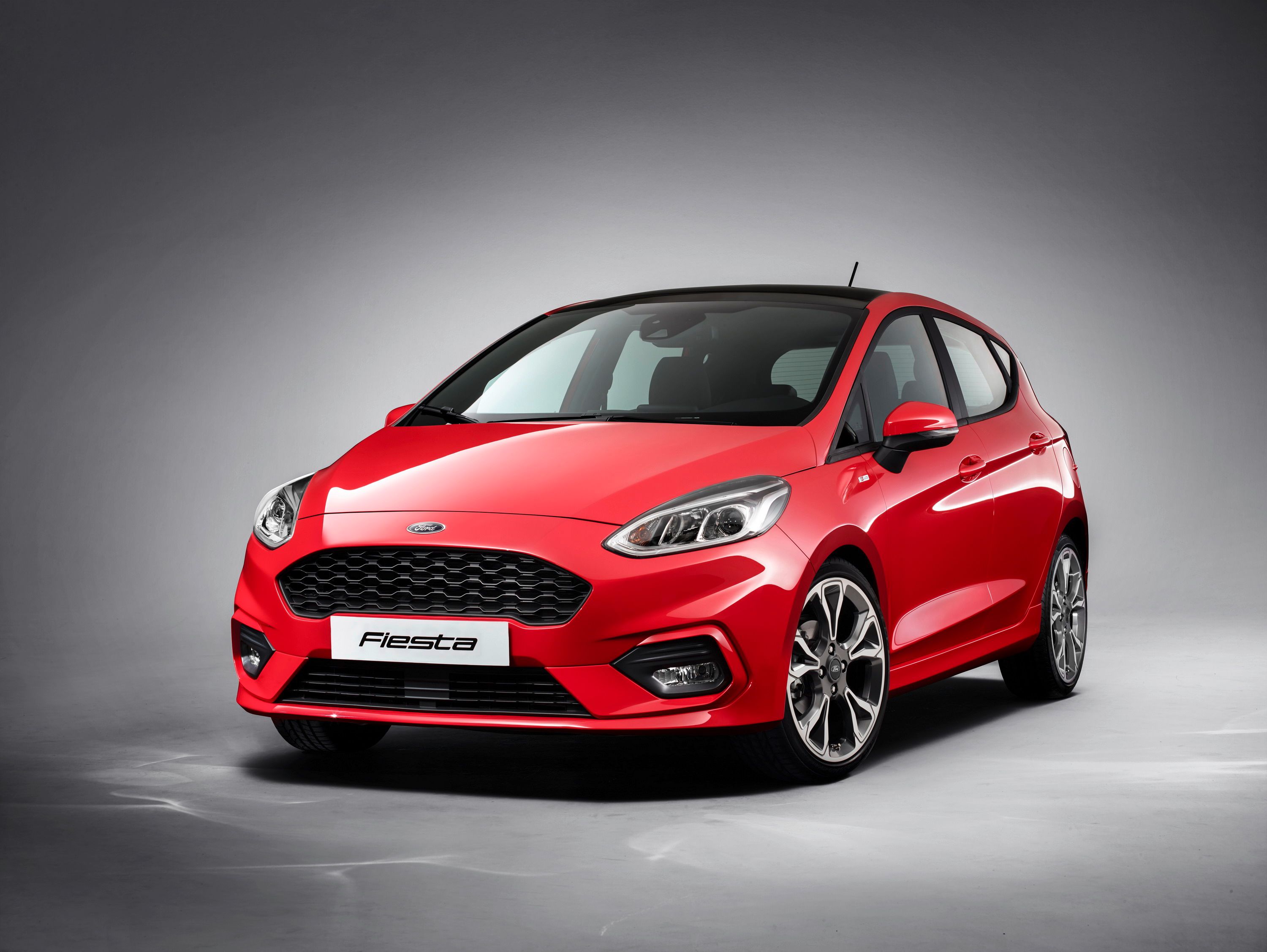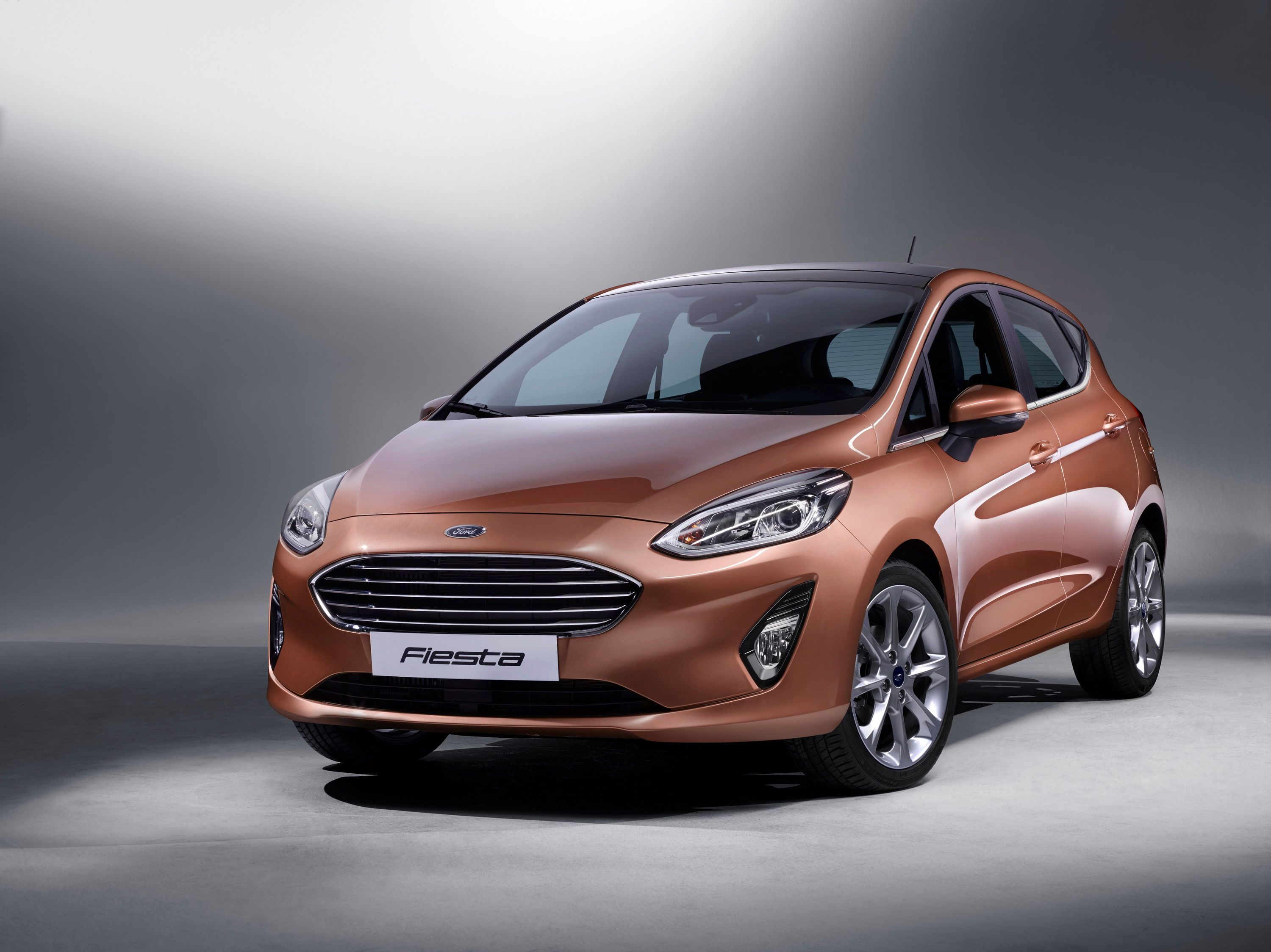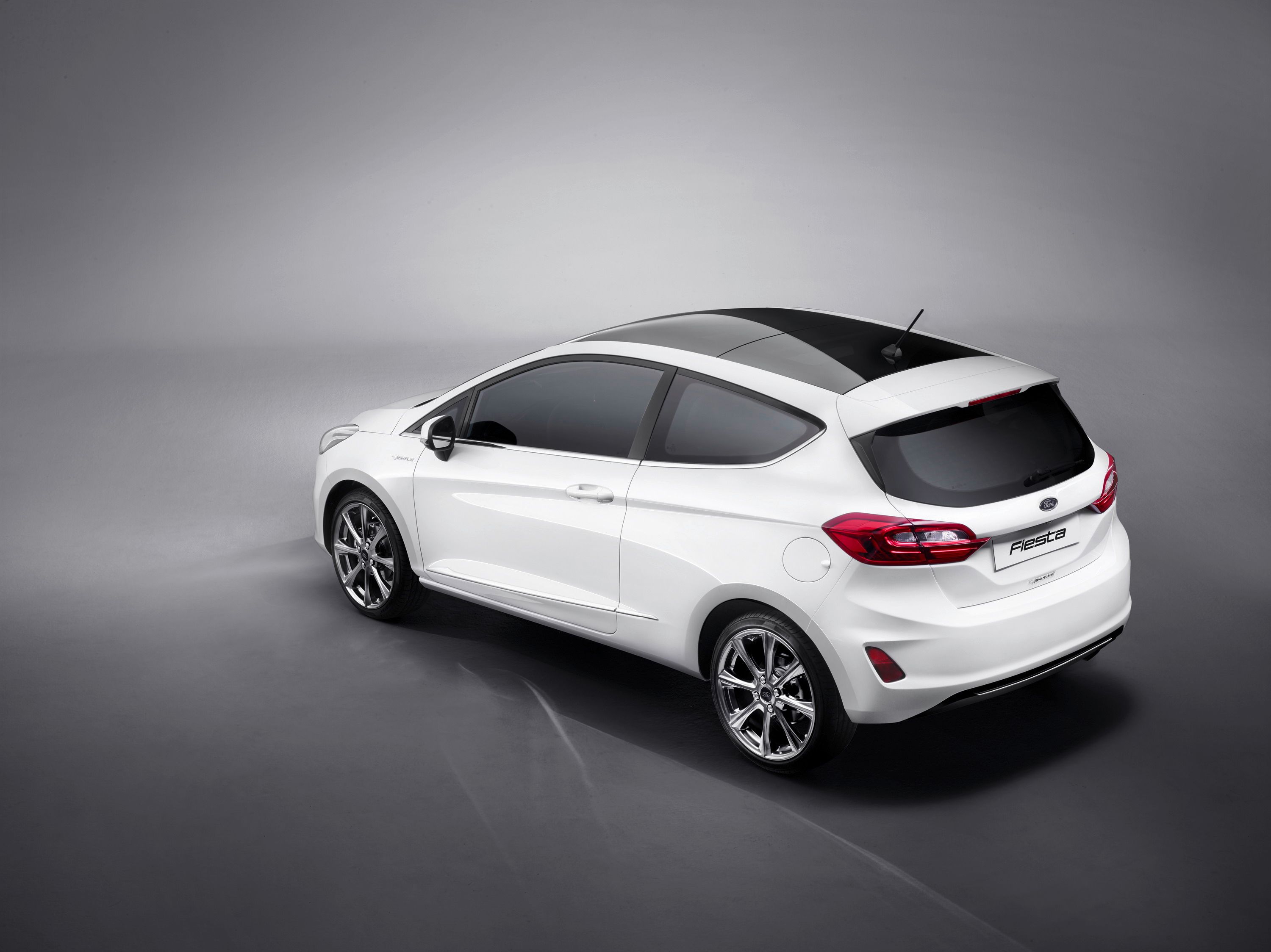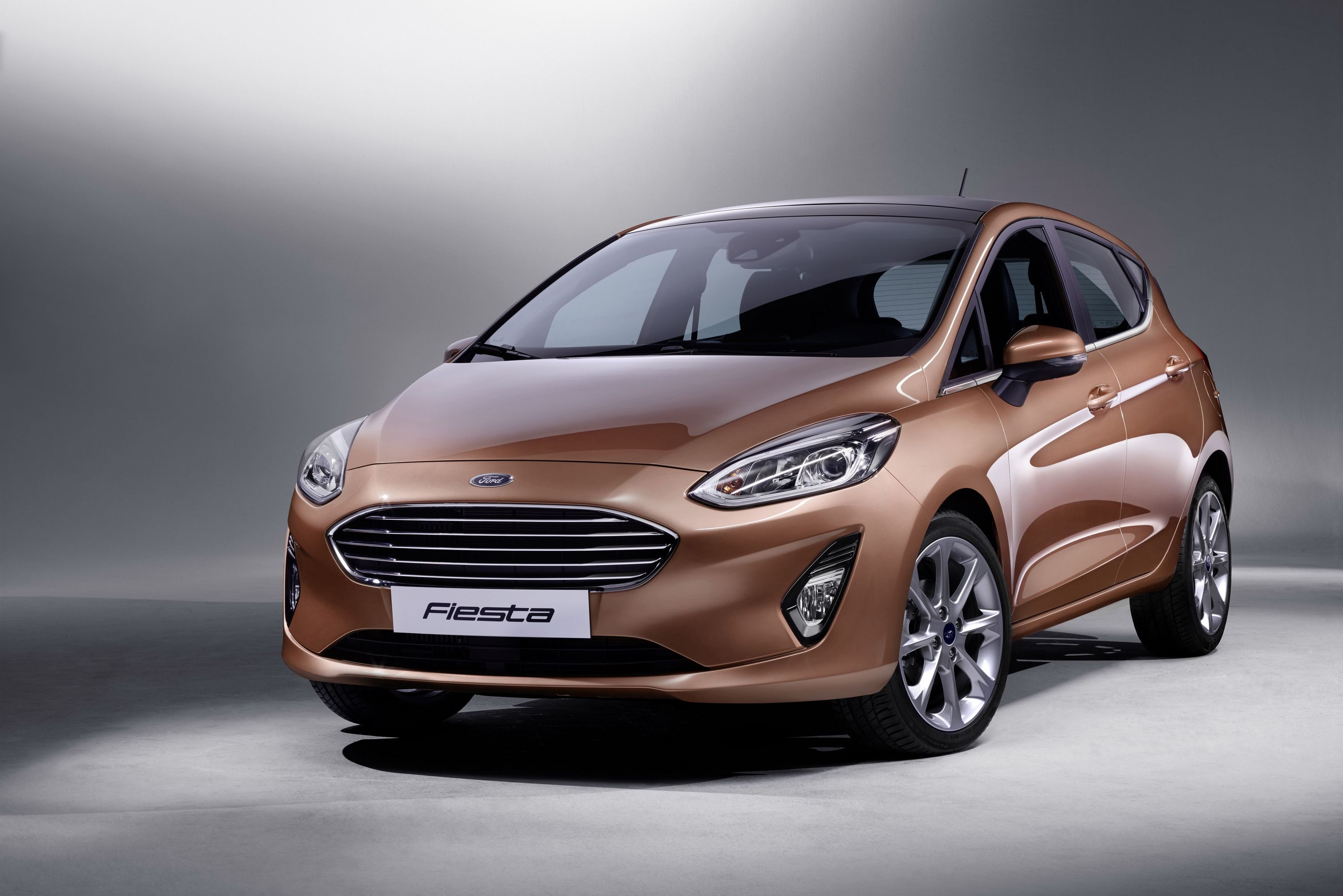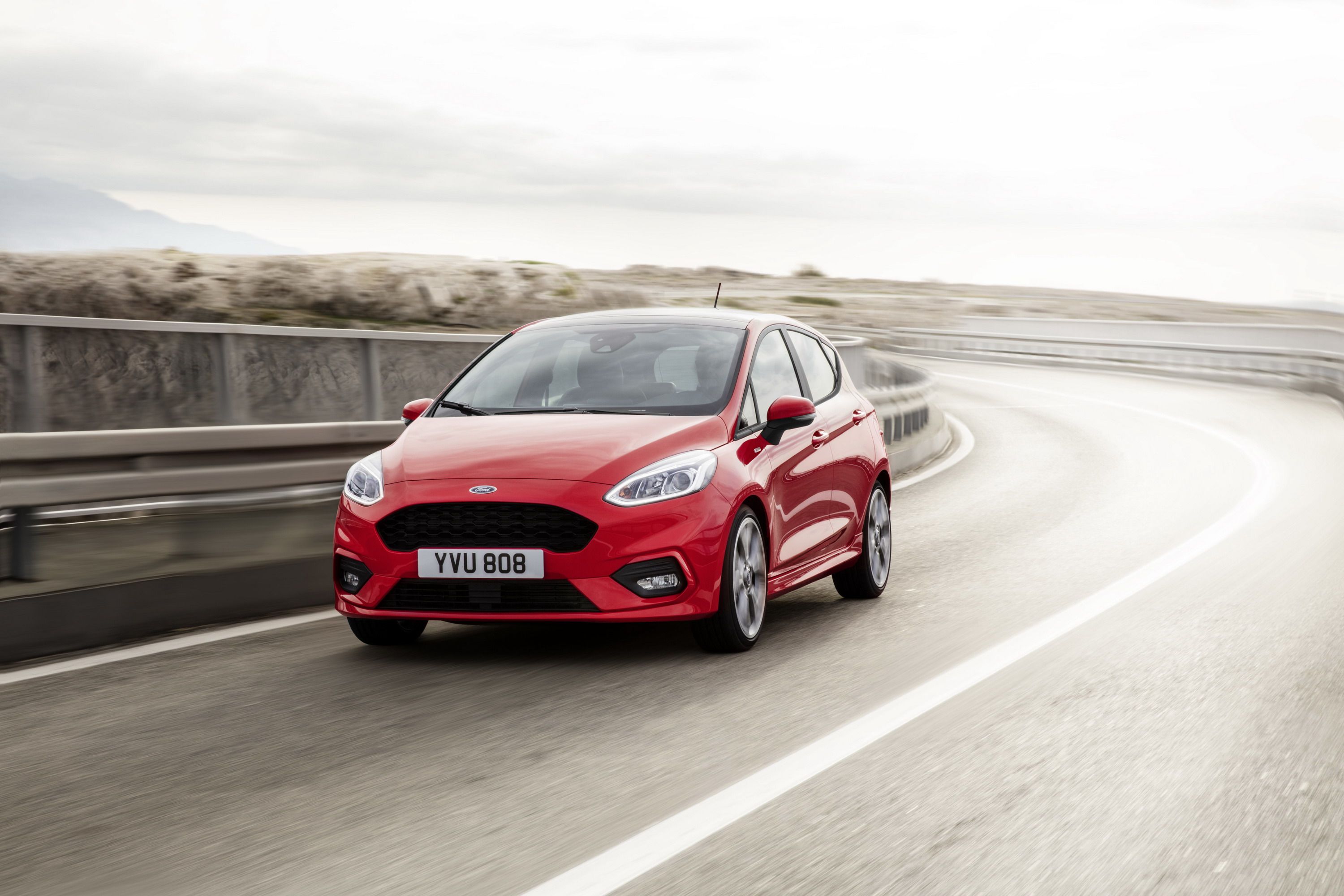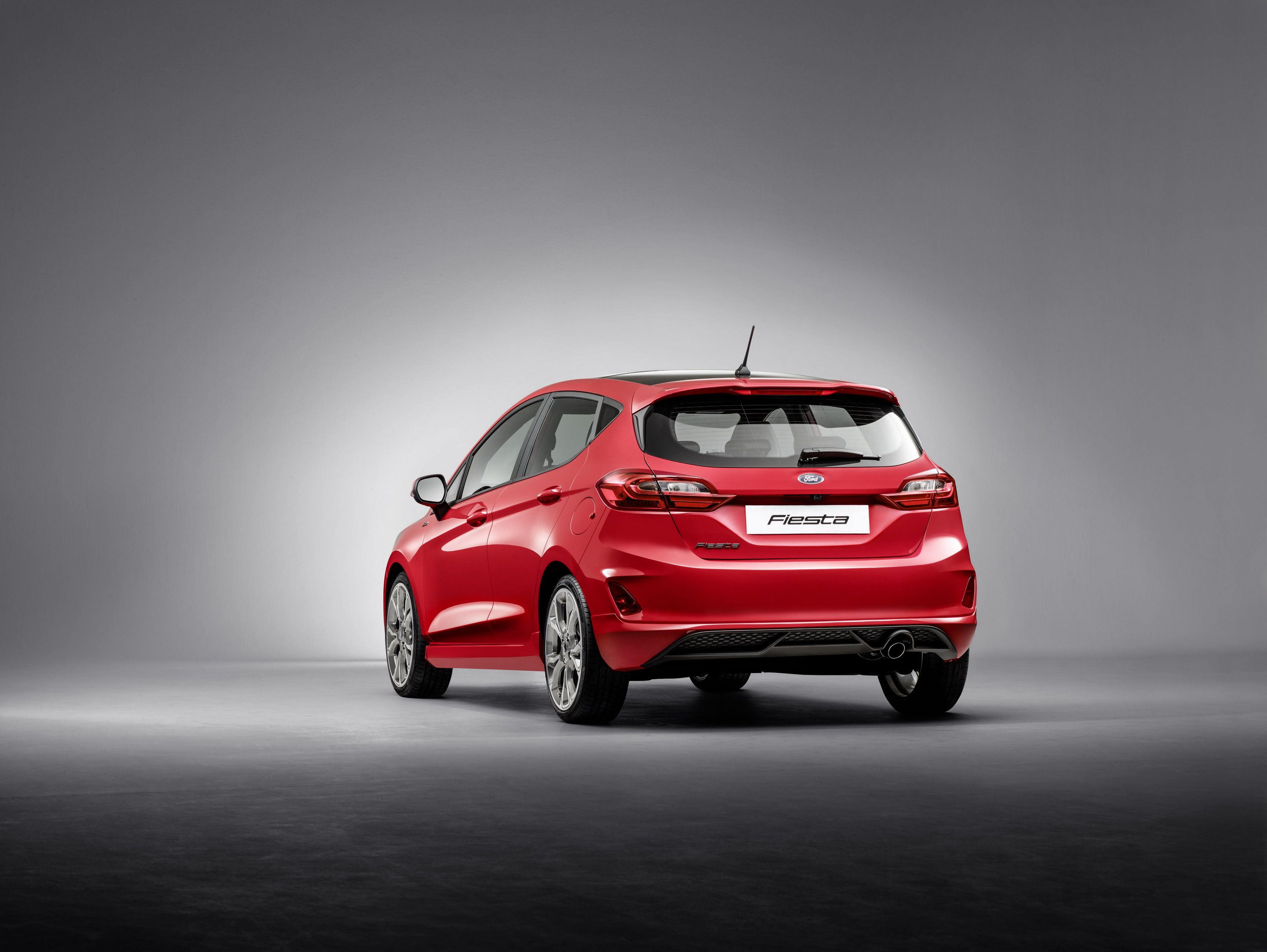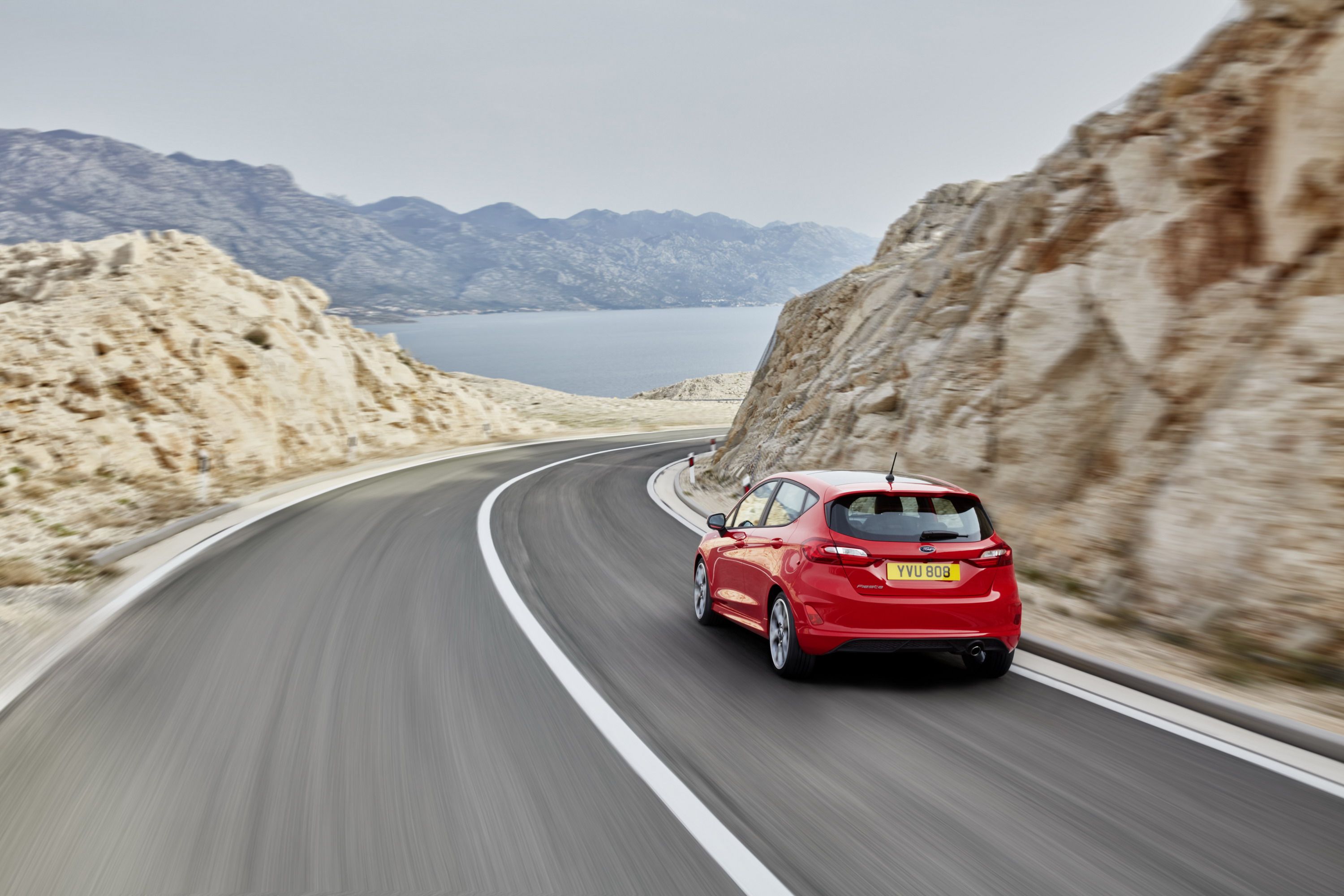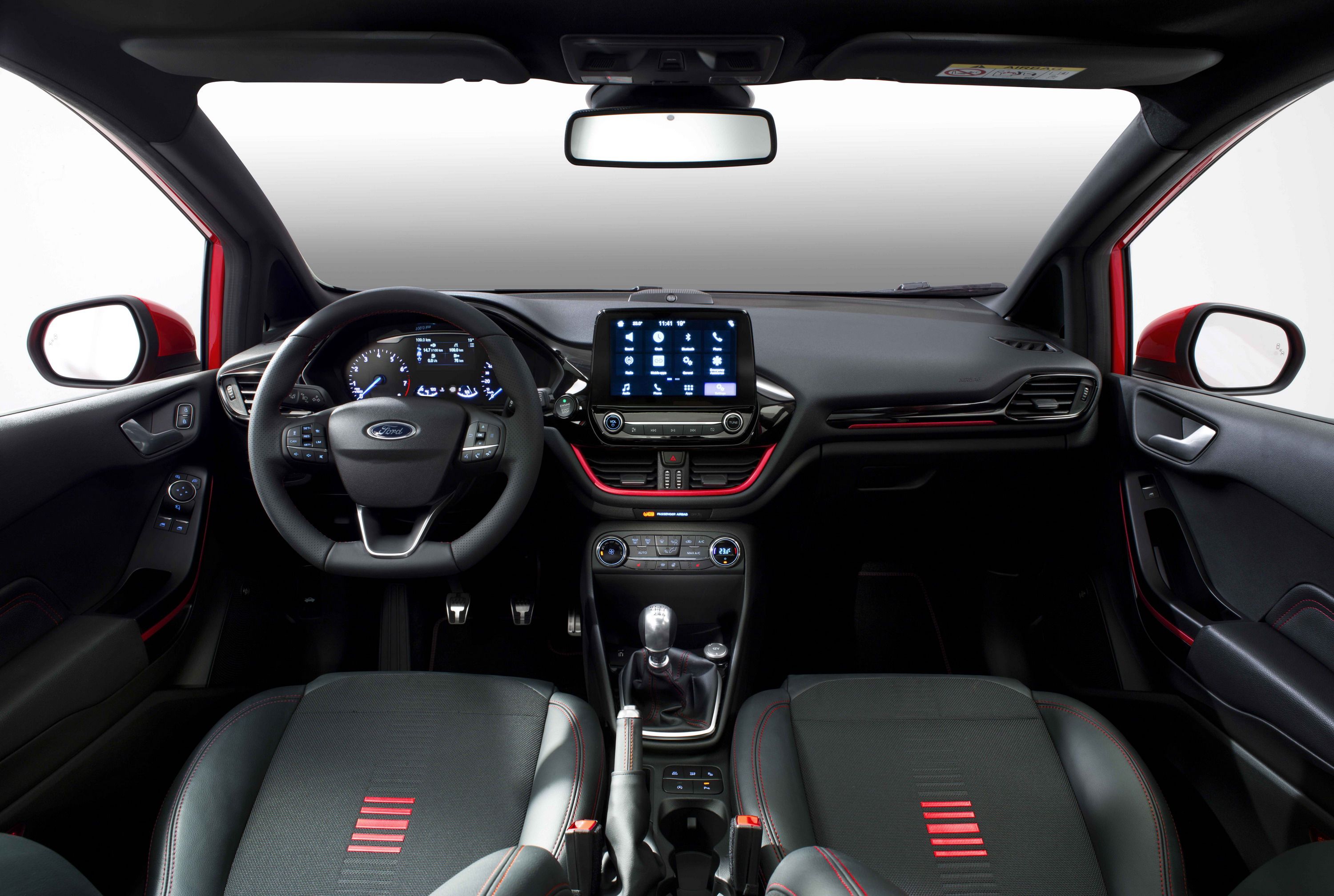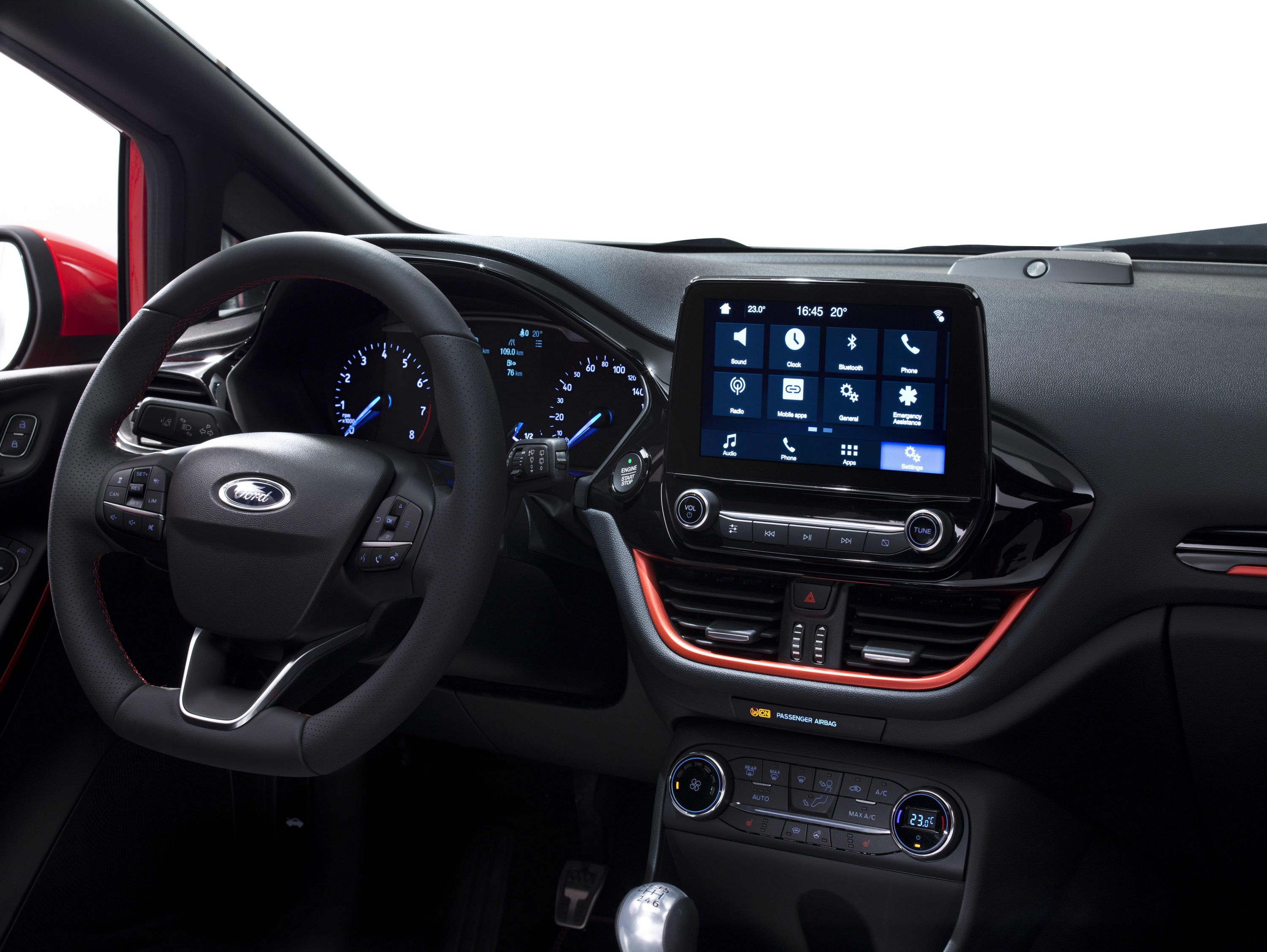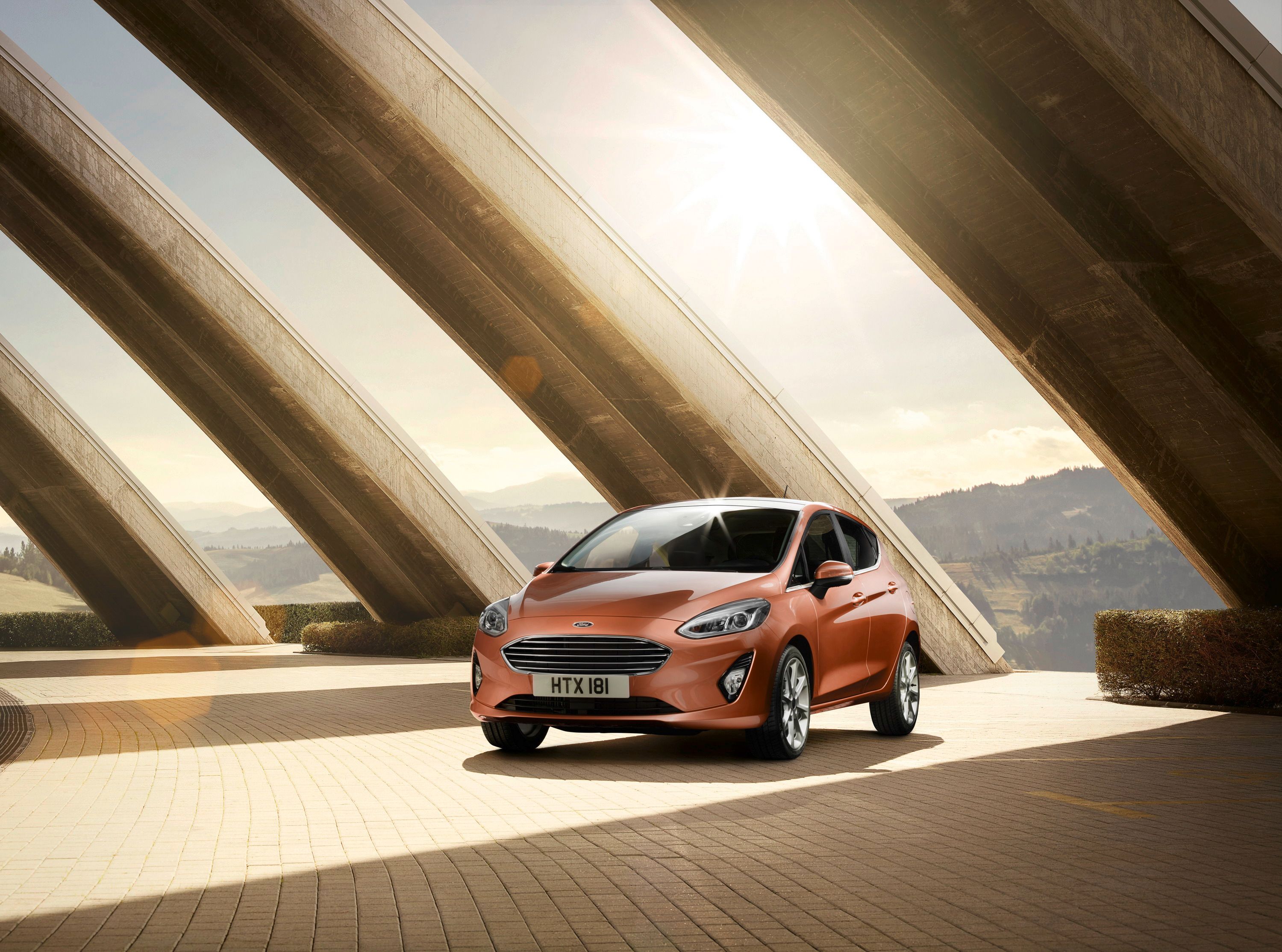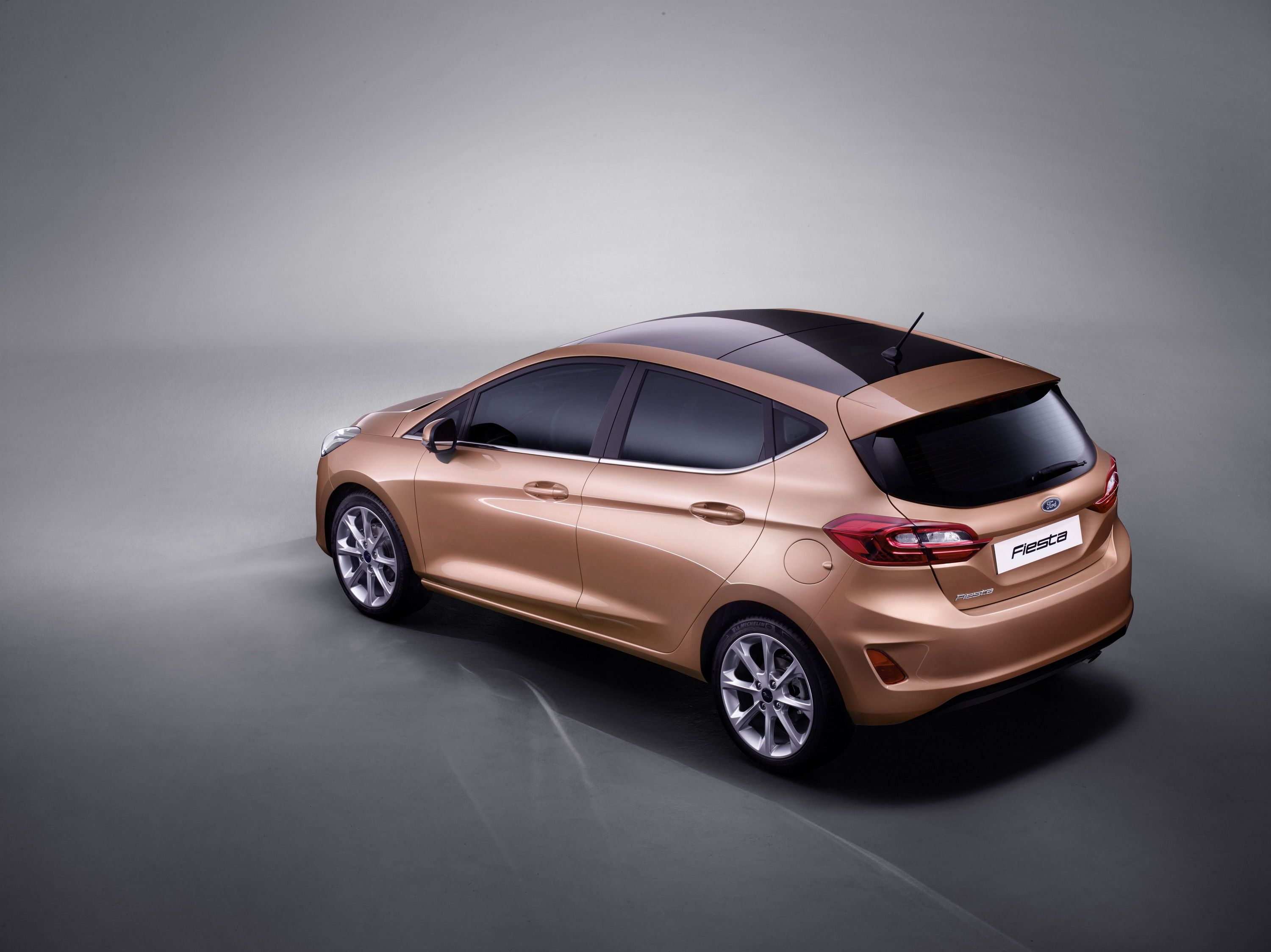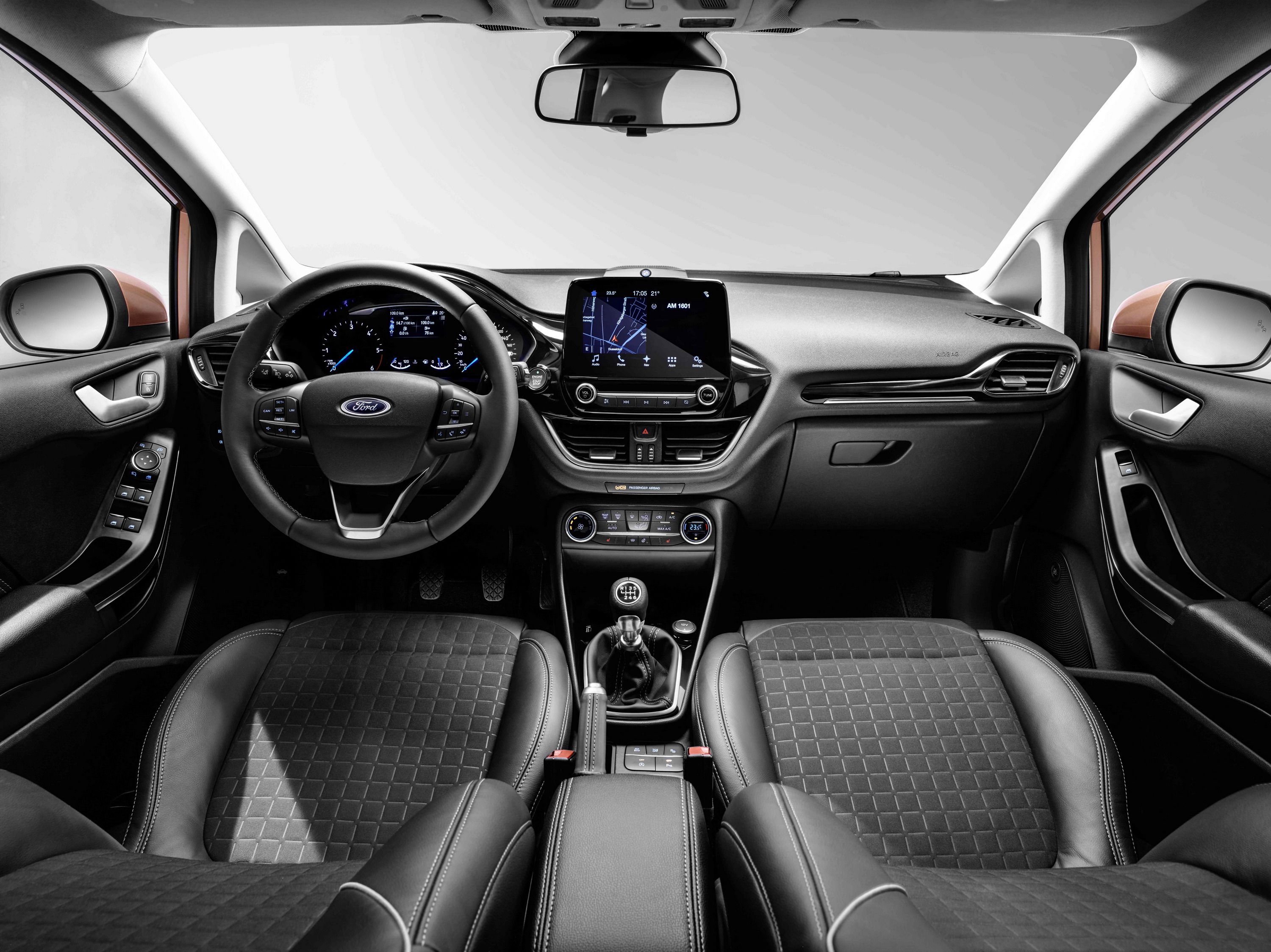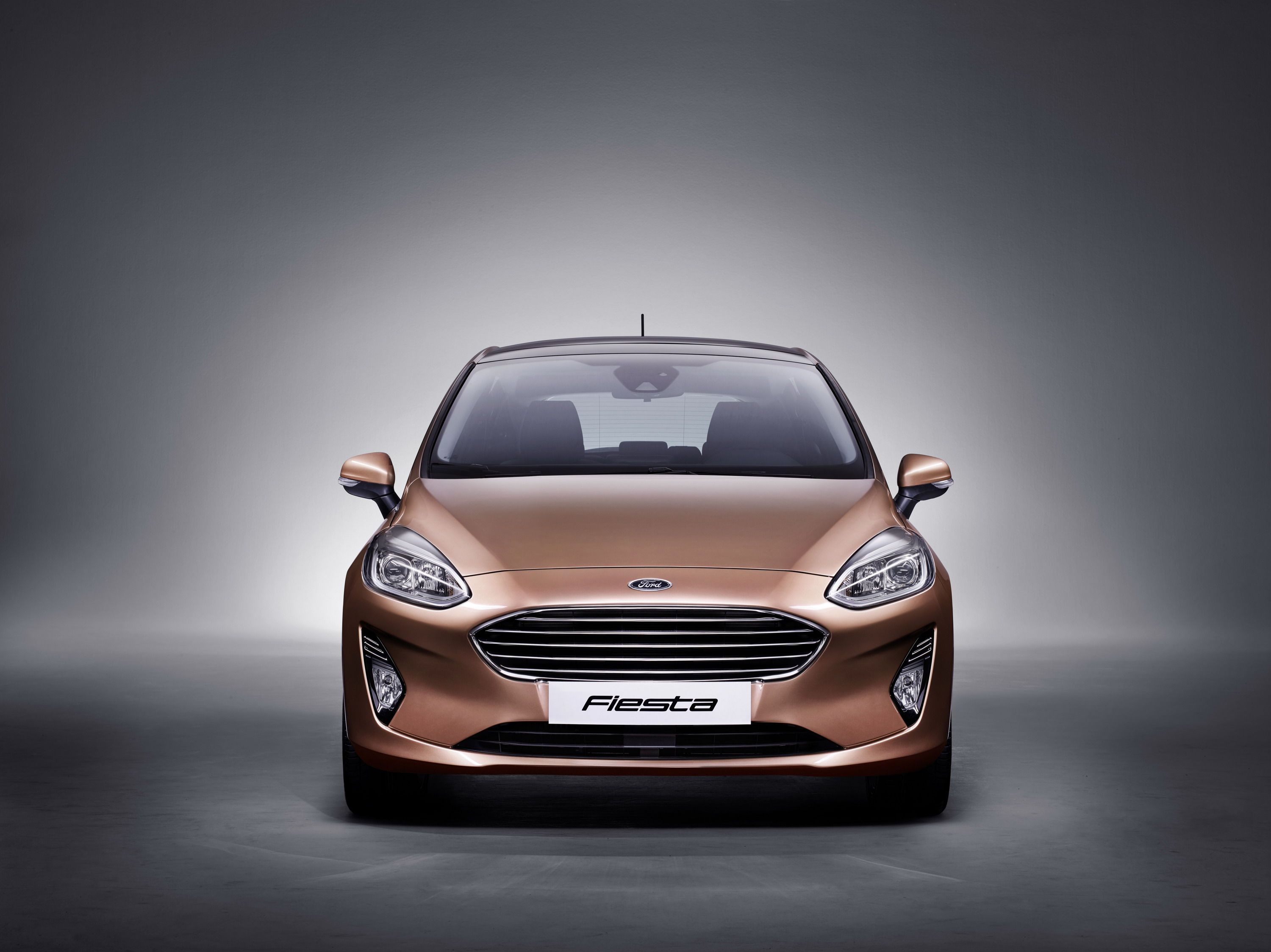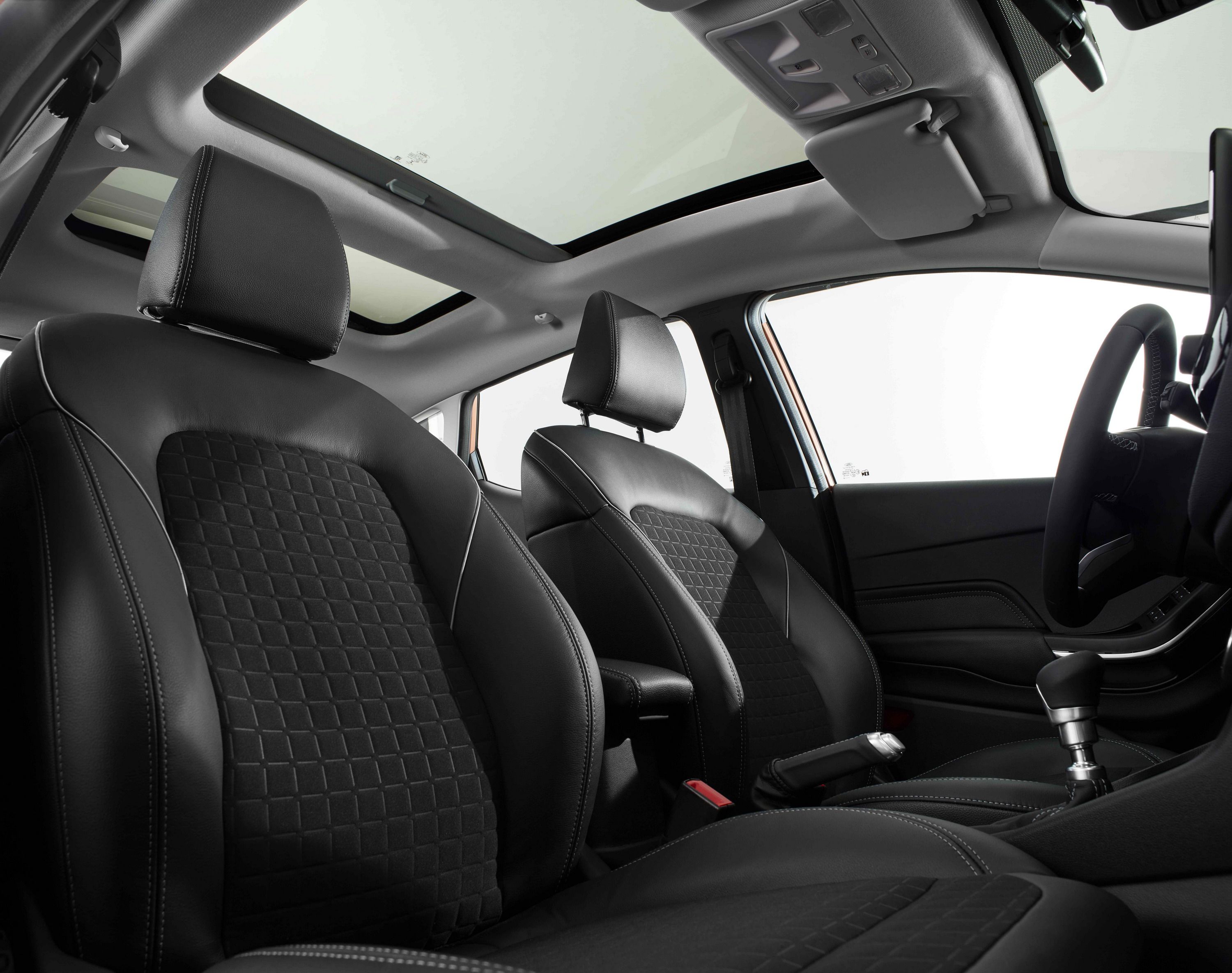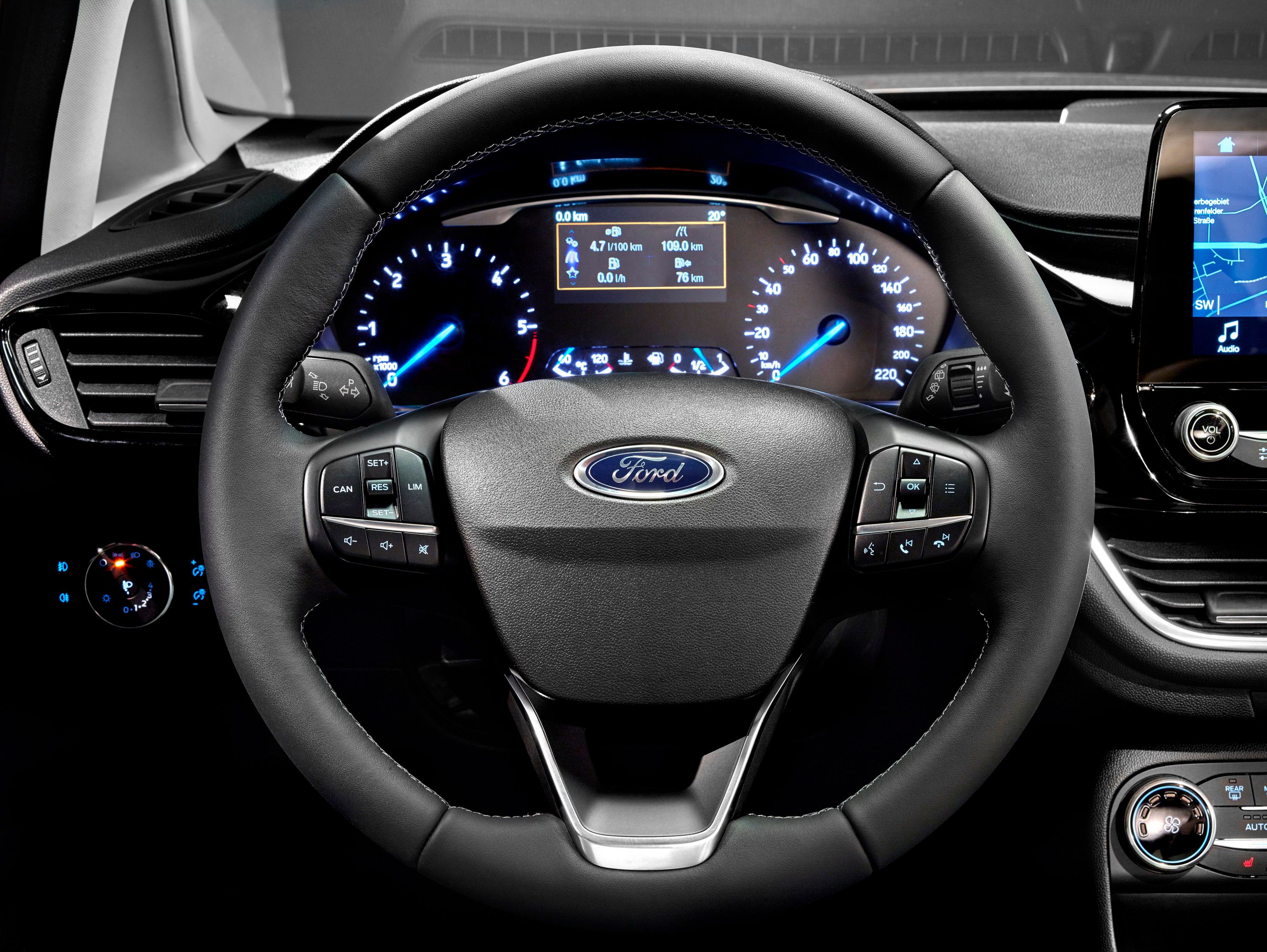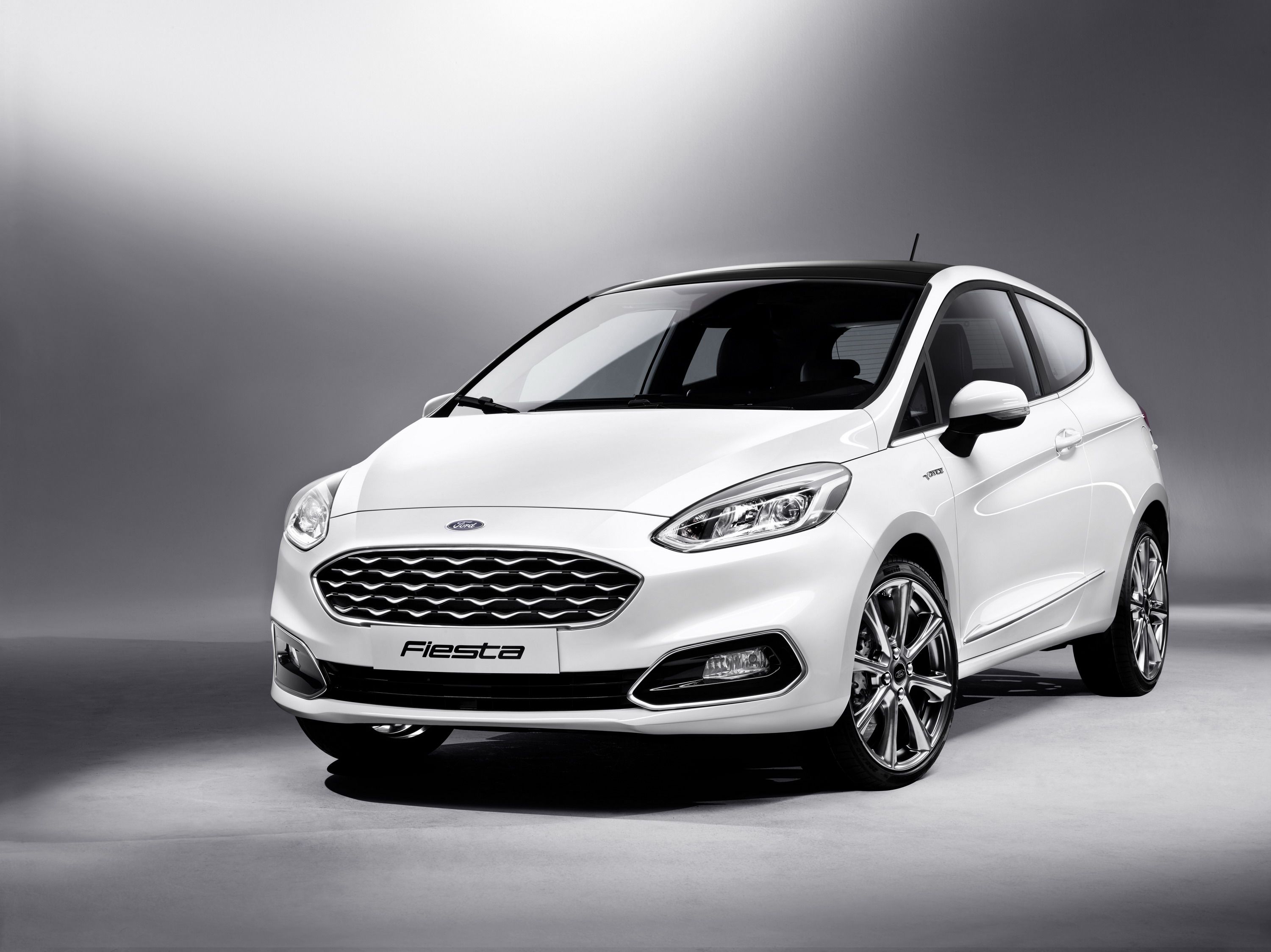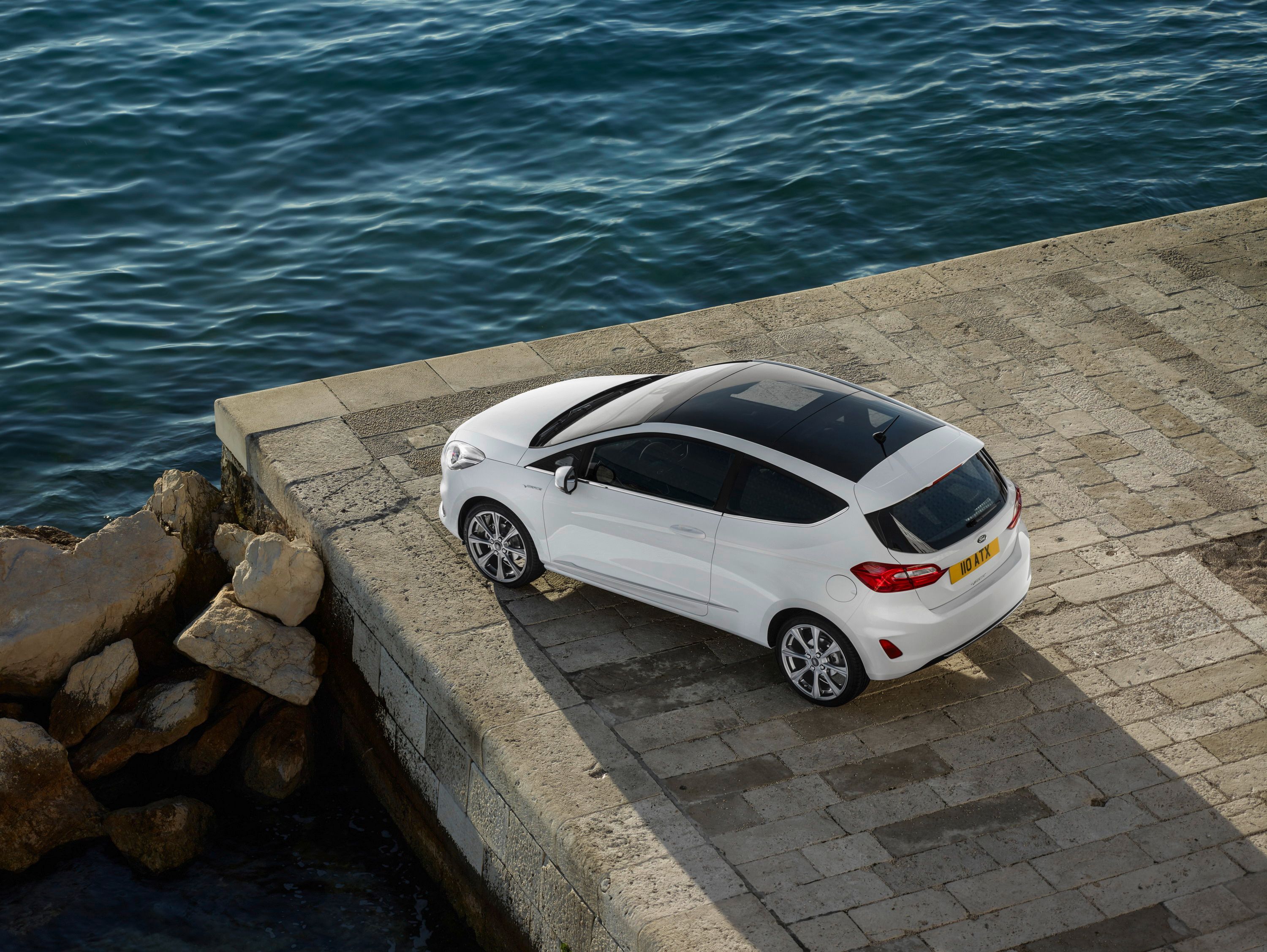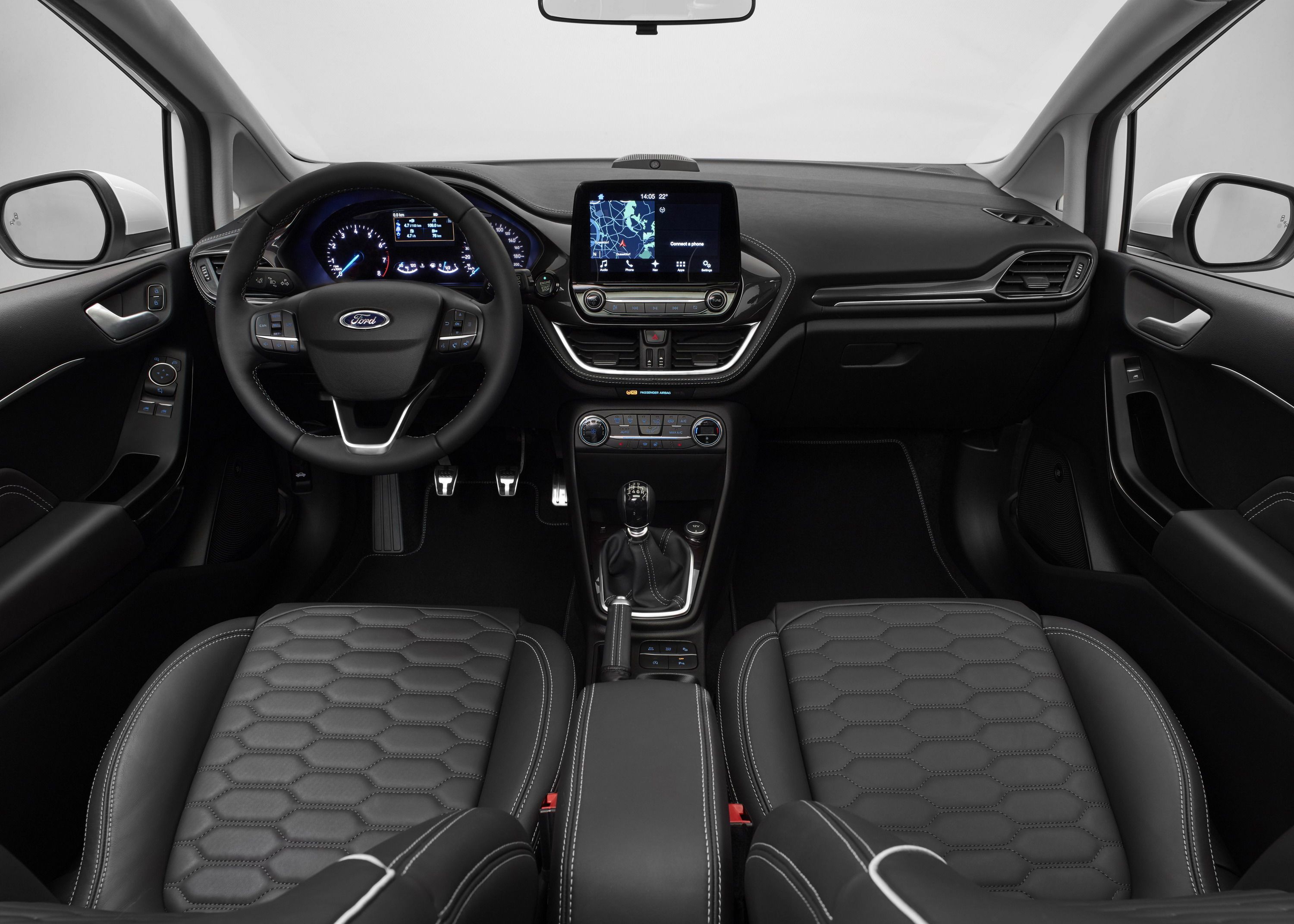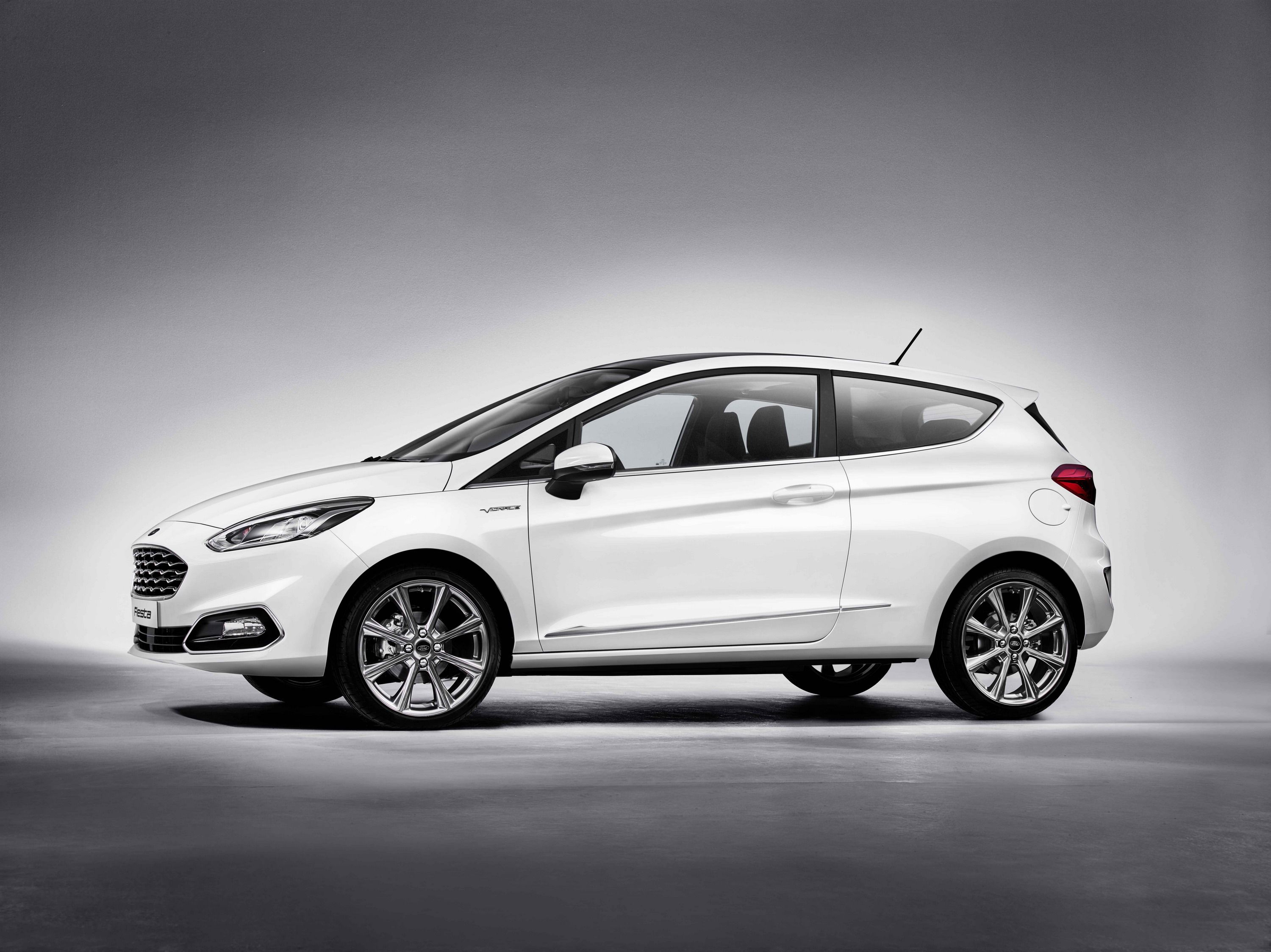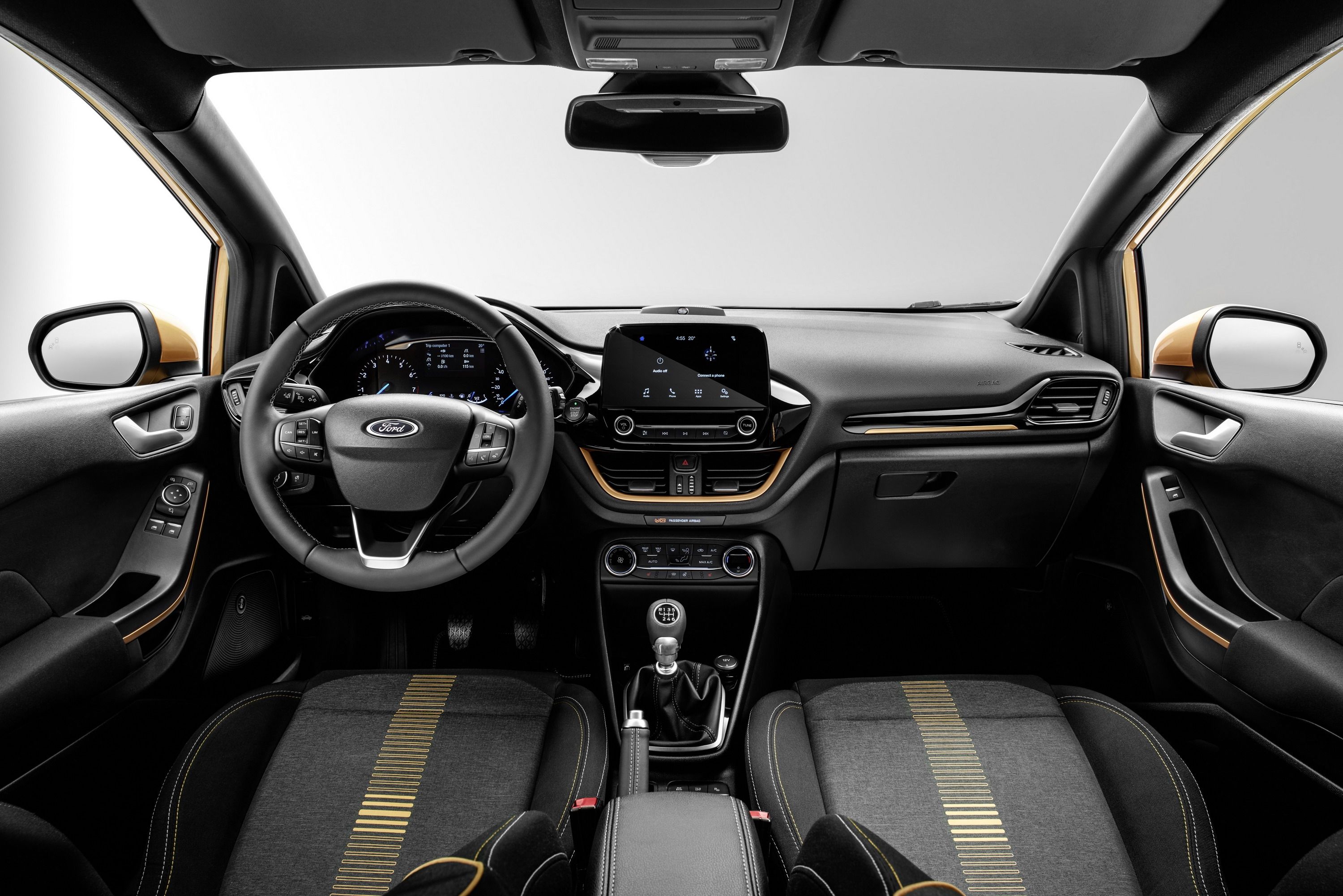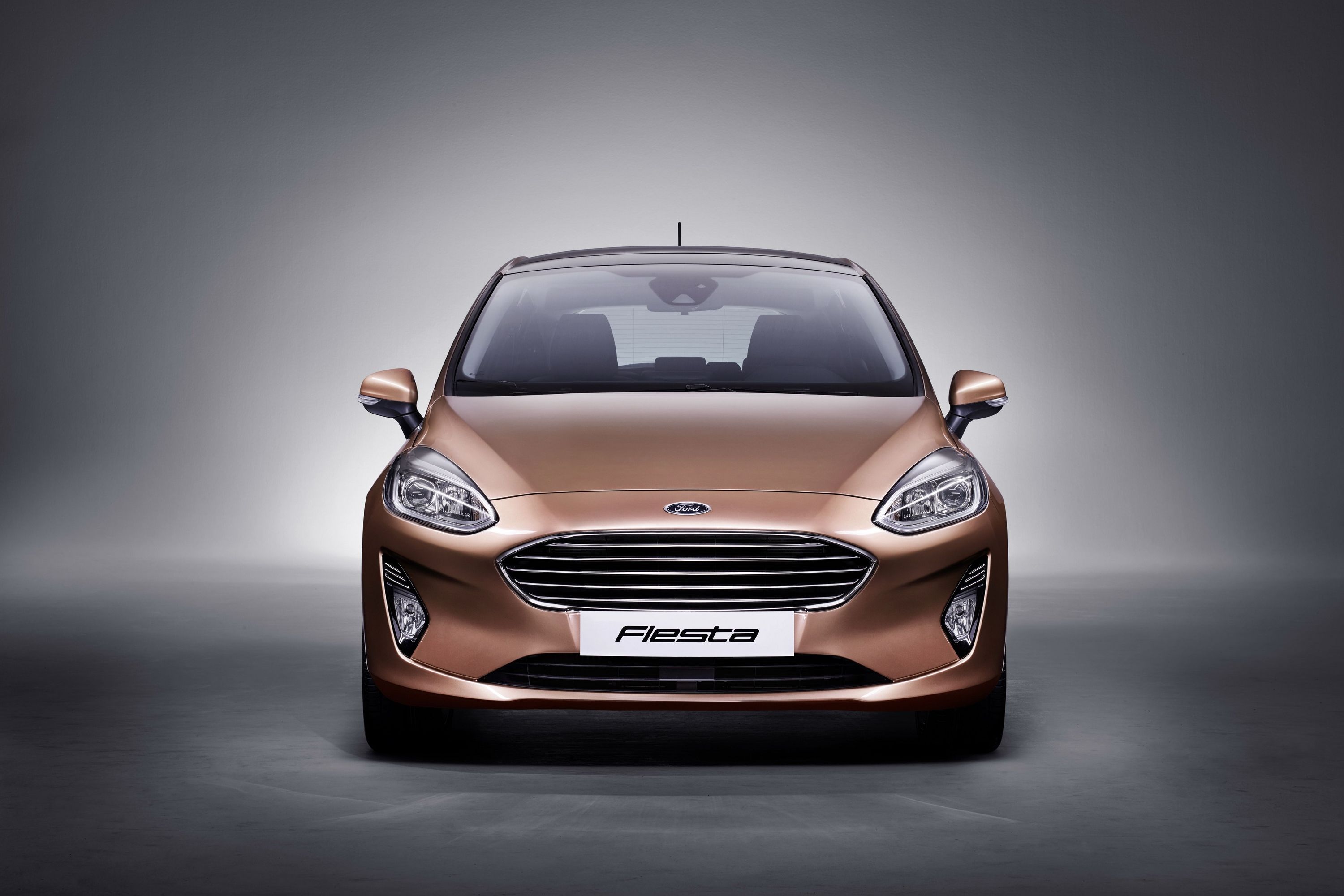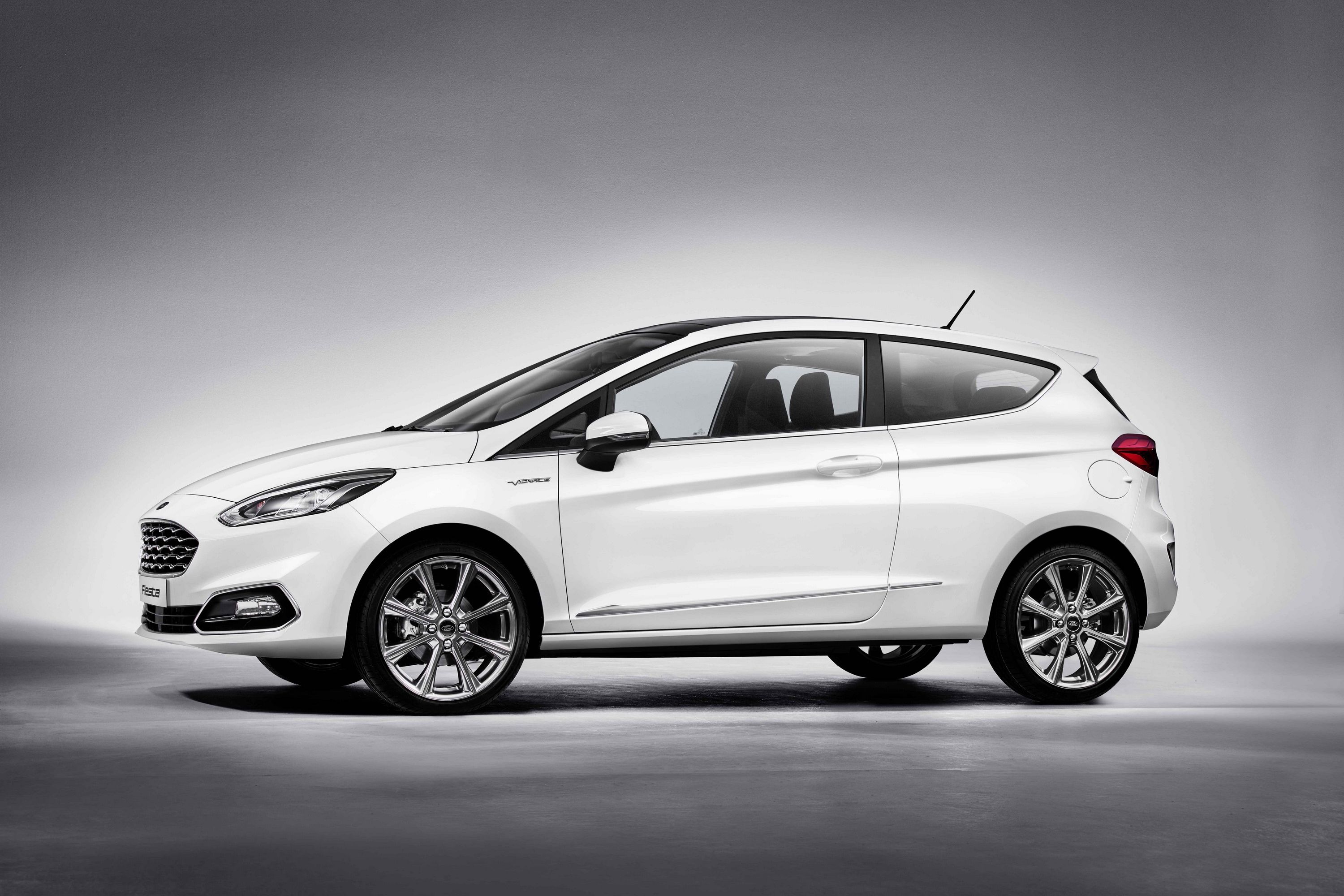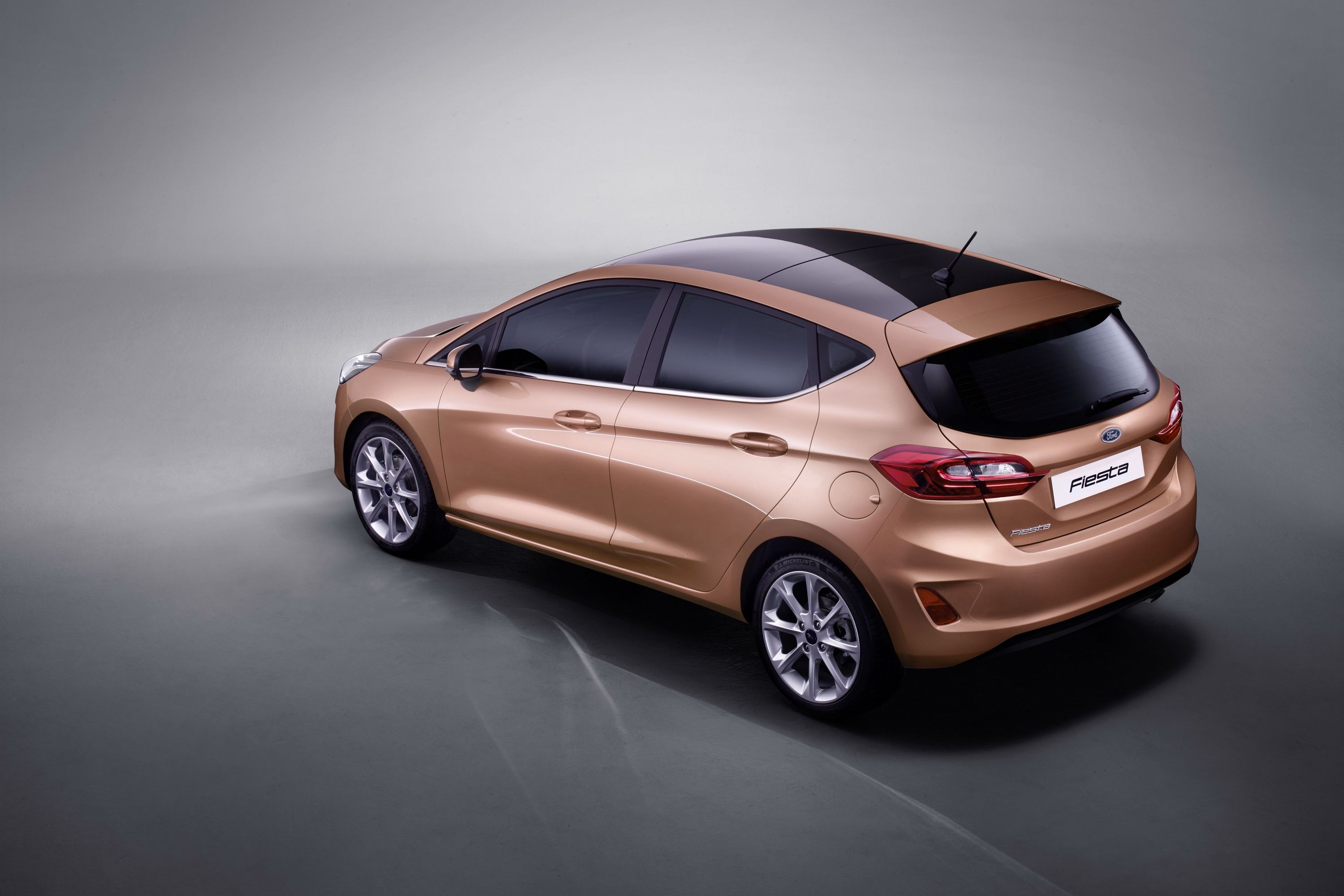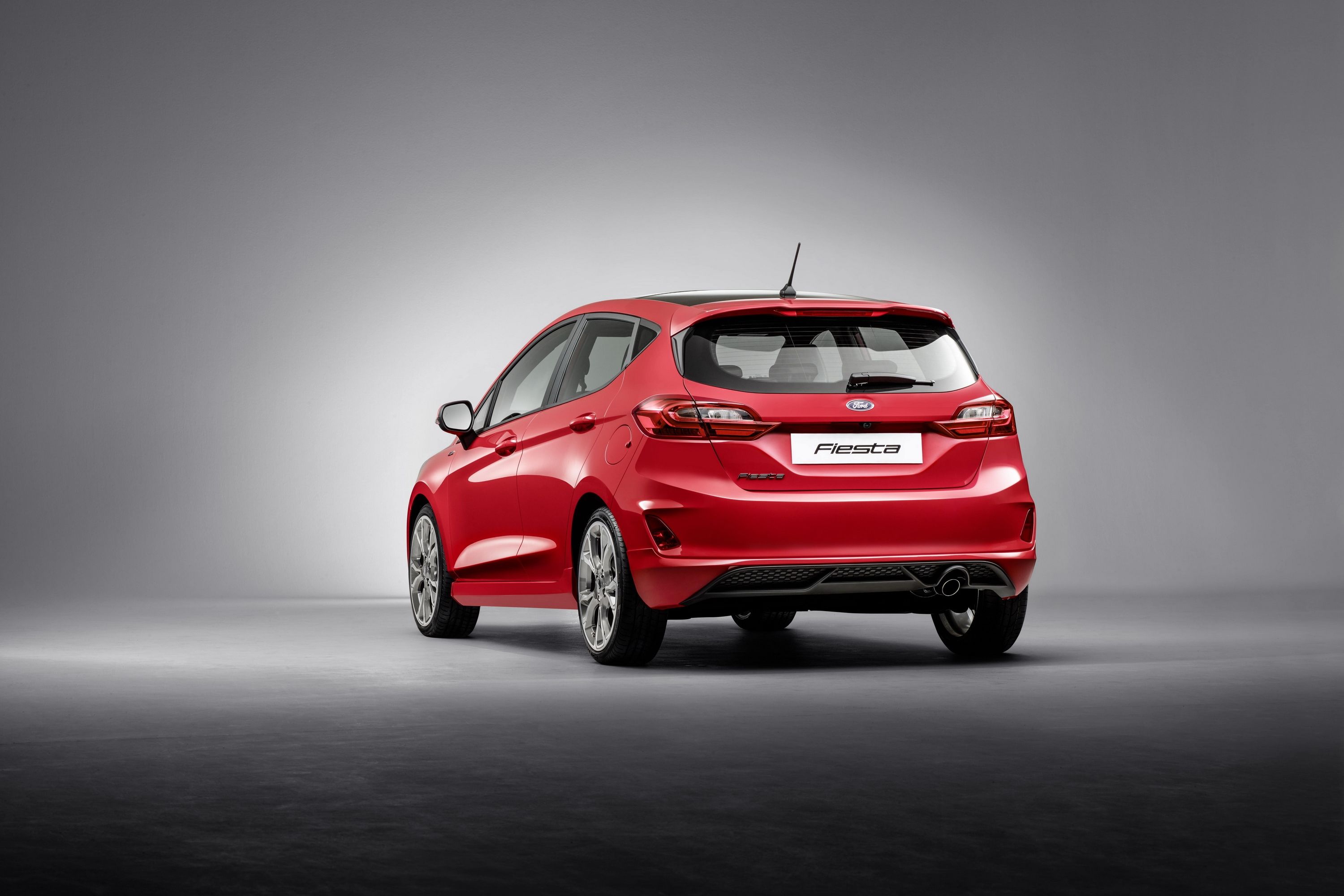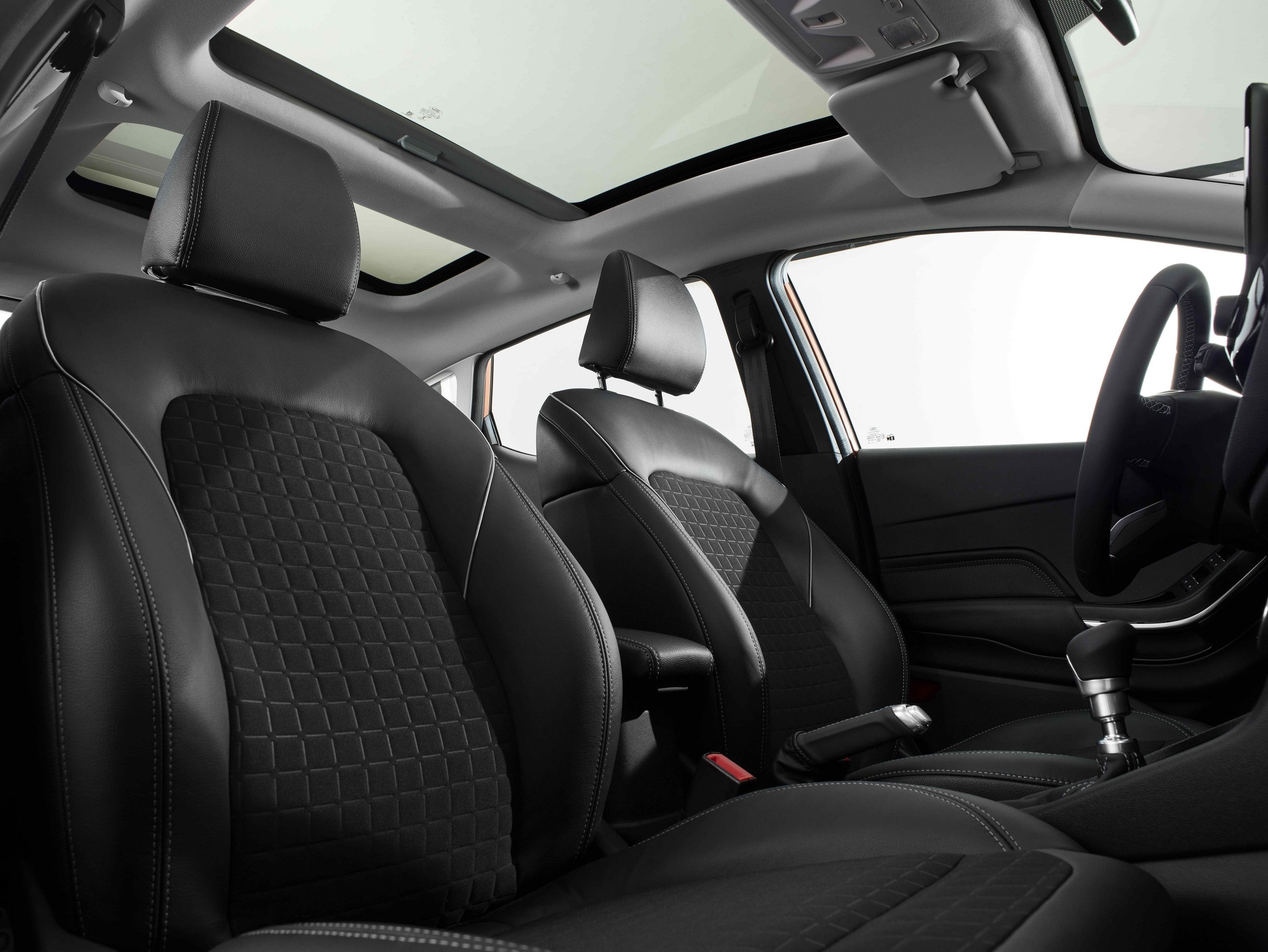The current generation Ford Fiesta has been around since 2008, with a mild facelift happening for the 2014 model year. That means it’s about time for Ford to usher in a new generation, and now Ford has finally spilled the beans on what the new Fiesta will bring to the table. At launch, there will be four variants available that include a sporty ST model, a more luxurious Vignale model, the Titanium Model, and – believe it or not – a Fiesta Active that includes features like protective body cladding and raised suspension. But, wait there’s more. The new fiesta features some new assistance features like pedestrian protection and active park assist, is the first Ford to feature a B&O Play sound system, and comes with Fords Sync3 infotainment system with screens that range up to a maximum of eight inches. On the drivetrain front, there’s a new 1.0-liter EcoBoost and a 1.5-liter Diesel to go with a new six-speed manual transmission and electronic torque vectoring control.
Over in Europe, the Fiesta resides in a segment known as “supermini,” and the competition in this segment is huge. Models like the Volkswagen Polo Hatchback and Mazda 2 Hatchback offer excessive style and an awesome driving experience that’s really hard to beat. The upgrades that come with the seventh-gen Fiesta should help it stay on top of the over populated and constantly growing segment. And, the best part is that with so many variants available at launch, there is a model for just about anybody – even if you're someone who fancies taking your little hatch over slightly rougher terrain.
With that said, let’s take a seat in the new Fiesta and go over all the funky details.
Continue reading to learn more about the upcoming Ford Fiesta.
2017 Ford Fiesta
- Make: Array
- Model: 2017 Ford Fiesta
- [do not use] Vehicle Model: Array
Exterior
Right away, it’s easy to notice that the new Fiesta features more distinct body lines than before. But, in an attempt to make the car more sporty, the new angles kind of make the front end look like a frowning guppy or catfish. Seriously, look at the front end – the headlights are eyes, and the new shape of the radiator grille gives the car a frowning appearance. Okay, all jokes aside, it might look a little funny, but there’s actually a lot of change here, so let’s give Ford some credit. The headlights are about the same size, but no longer have a sharp point at the outside edge as they now take on a more bubbly appearance. The grille now features a new look with a somewhat jagged lower edge with the lower side edges longer and more upright than before (this is where the frowning comes into play) Each model features its own grille layout. For instance, one has a wavy mesh, while the Titanium model features chrome slats. Down below, the air dam has grown taller and is now wider at the bottom instead of at the top. The inserts on each side of the grille wrap around the fog light inserts on each corner, giving the car a sportier appearance.
Moving over to the sides, Ford made good with the new design by accentuated body lines that were found on the current model. To put it simply, the body line that runs through the door handles and the bodyline toward the bottom of the doors are more pronounced than ever. It gives the car a more sculpted appearance without looking too muscular. The most important thing to note is the redesign of the rear quarter glass. This glass is now much higher than before and is triangular shaped with the rear most point rather high on the body. It’s a huge departure from the outgoing model and will make things fresh for at least a few years. It should also be noted that the new Fiesta is easily customized with contrasting roof colors and mirror caps in black, white, Bohai Bay Mint, or New Chrome Copper. Exterior color options include Blue Wave and, if you go with the Fiesta Vignale, Milano Grigio.
In the rear, the Fiesta gets an all-new look that is a pretty wild departure from the outgoing model. For instance, the tall, and high-mounted taillights of the outgoing model are no more, with shorter, wraparound units taking their place. The contour of the new taillights also meet up with and carry on the upper body line from the side profile. The hatch has been completely redesigned with a more modern look while the lower fascia now gets recessed, vertically oriented reflectors. Distinct body lines outline the reflector in each corner while the rear fascia insert now sits much lower than before. One particular thing to note is that the three-door hatch is far sexier than the five-door, so unless you really need those two rear doors, the three-door model is the way to go.
The Differences
Each of the four models – the ST-Line, Titanium, Active, and Vignale, all feature their own unique features that set them apart from each other. The Vignale, for instance, gets a custom grille pattern and grille surround, as well as custom foglamp surrounds, and a rear diffuser deco element. The titanium gets a selection of chrome bars on the grille and sides to go with vertical foglamps. Meanwhile, the ST-Line is inspired by Ford Performance and takes on a sportier appearance than the rest and features an active spoiler for a little extra downforce if you decide to get froggy. Finally, the Active – a model that we’re not quite sure about yet—is being called a crossover and features simple things like body cladding around the bottom edges and a raised ride height that will help it traverse rougher terrain – you know, in case you decide to offroad or yard beat your little hatch.
Competing Appearances
With so many models in the supermini segment, it’s hard to pick out just a couple, but two of the primary competitors include the Mazda 2 Hatchback and the Volkswagen Polo Hatchback. Where the new Fiesta offers a frowny fish appearance, the Mazda 2 brings a happier look to the party with a defined grille that is outlined in chrome and an air dam that is almost flat on the bottom but has a small dip in the top line that gives it a smiling appearance. The corner foglights look almost like a set of twisted eyes that are recessed just a tiny bit into the fascia. Distinct body lines on the hood carry over onto the sides, where the wavy look gives the sense of length. It offers just the right amount of flash and sporty presence without going too overboard. On the plus side, Mazda knew better than to offer the Mazda 2 with a raised suspension, so don’t expect to see any of that crap here. The 2 is available in several variants including the standard hatchback as well as a Sport Black model and a Red Edition model.
When it comes to the Volkswagen Polo, it looks a lot like a smaller Golf, which isn’t necessarily a bad thing. While models like the Fiesta and Mazda2 are defined by their massive and oddly shaped grilles, the Polo takes a different approach with a small, rectangular grille that is located directly between both headlights. Down below, a lard air dam runs the width of the front fascia and features a chrome trim strip at top. Foglamps are recessed into the upper corners of the air dam. Moving to the sides and rear, things on the Polo are pretty basic and somewhat minimalist. There are no funky or wavy body lines. Instead, VW went with straight body lines that provide a somewhat sculpted look, but are far from excessive. The wheel arches are flared a bit to give a sense of width, but it’s nothing major or radical compared to the other models we’ve discussed.
When it comes to making a decision, your biggest choice will be whether or not you want something that sticks out or something that doesn’t. The Polo, for instance, is somewhat mundane and fits into just about any crowd, while the Mazda2 features a wild design that is accented by wavy body lines and an aggressive front end. The new Fiesta and its frowny fish face sits right in between these models as far as design goes.
|
Mazda2 |
Volkswagen Polo |
Ford Fiesta |
|
|
Wheelbase (inches) |
101.18 |
97.24 |
98 (est.) |
|
Length (inches) |
159.84 |
156.3 |
159.7 (est.) |
|
Width (inches) |
78.07 |
66.22 |
67.8 (est.) |
|
Height (inches) |
58.85 |
57.20 |
58.1 (est.) |
Interior
When Ford initially announced the seventh-gen Fiesta, we weren’t privy to a good look at the interior. Well, not until it showed up at the Detroit Auto Show, at which point we were able to get up close and personal with Ford’s newest compact hatch. The interior has been largely reworked, especially when you take into account the car’s location in the food chain. As far as interior design goes, the dash is now flatter and less bulky, and those annoying circular vents on the end of the dash have been replaced by rectangular units. The way the passenger side vent feeds into the trim element that garnishes the dash face is a nice touch, no doubt. The central vents were also change, now sitting below the infotainment screen next to each other, also featuring a rectangular shape. The center console is now a bit wider and is separated from the dash instead of feeding directly into it. The center console now features fewer buttons, and there’s a new storage bin to store things like CDs and USB drives. The glove box has gotten larger and new storage cubbies in the rear doors serve has bottle holders (0.6-liter bottles.)
Rear legroom has actually grown by 0.62 inches, but as a bigger guy, I have to admit it’s still not a comfortable place to be unless you make the front passengers and dash merge into one. But, for those who don’t have long legs or wide guts, it’s probably not that bad of place to be in small doses. Despite the compact nature, the seats themselves were actually quite comfortable. The front seats are more comfortable and supportive than those of the last-gen model and feature a new stitching layout that’s a little more modern. A newly-designed steering wheel brings a smaller airbag unit, thinner spokes with more thumb buttons, and a thinner center spoke. The range-topping model does get a flat-bottom unit. Some models will benefit from a renewed instrument cluster with a much larger digital display in the center.
On the infotainment front, you’ll find Ford’s Sync3 system doing its thing with a 6.5-inch screen as standard or the eight-inch screen for those upper trim levels. Both screens “float: atop the center stack, but really it looks like someone glued a decade-old tablet to the dash. The base of the infotainment display, however, has been sized down considerably and is more intuitive. While it looks a little old school with the thick frame, Ford claims that both screens offer “class-leading resolution” and are “up to twice as bright as competitors.” They aren’t kidding about the brightness, either. Phone connectivity and audio streaming is made possible via Android Auto and Apple CarPlay thanks to Bluetooth. Sync App-link allows voice activation of some smartphone apps including Spotify and HearMeOut. Finally, an optional B&O Play sound system Is also available offering up 675 Watts of power for those who want a little more bump in the rump.
The Competition
When it comes to the Mazda 2, you might find comfort in its most recent design for 2016. With the redesign of the exterior, the interior also got a little love. The dashboard is simple with very few styling cues. It features circular HVAC vents and a lower strip in contrasting color. The instrument cluster is new, featuring a single tachometer in the middle with a digital speed display. To either side of the central gauge is a digital screen that displays things like the selected gear, outside temperature, engine temperature, etc. Entry-level models get the traditional cloth seats with lots of plastic trim, but moving up to higher-level models will get you perforated, leather-wrapped seats with contrast stitching, leather trim on the dash and door panels, and an updated navigation display that, like that of the Fiesta, floats above the center stack. For the first time, the Mazda2 is offered with the option of a heads-up display and comes with an active safety system comparable to that of the Fiesta. All told, the Mazda2 takes some interior DNA from the larger, Mazda6 Sedan and features an inviting cabin.
Moving over to the Volkswagen Polo, it’s a little less modern with an infotainment display that insect exactly pleasing to look at and is integrated into the center stack. The center console sits quite low and features a small storage pocket ahead of the transmission shifter. Models equipped with a manual transmission, however, make it harder to access and use this storage pocket. Lower end models get features like cloth seats and hard plastic just about everywhere, while upper trim levels benefit from a leather steering wheel, leather seats, and a few other niceties here and there. Safety features include things like active cruise control and parking assist. While we haven’t actually seen the interior of the Fiesta yet, it will surely be more modern than the interior of the Polo, but the Mazda2 poses a strong case as well. If you don’t mind dated looks, the Polo is most definitely for you, but if you prefer the best technology and most driver assistance features, you’ll want to look to the Mazda2 and the new Fiesta, as those will certainly suit your fancy.
|
Mazda2 |
Volkswagen Polo |
Ford Fiesta |
|||
|
Mazda2 |
Volkswagen Polo |
Ford Fiesta |
38.74/37.20 |
38.34/37.12 |
39.1/37.2 (est.) |
|
Headroom front/rear (inches) |
41.85/34.68 |
41.02/32.44 |
43.6/31.2 (est.) |
||
|
Legroom front/rear (inches) |
53.22/50.07 |
54.56/54.48 |
52.7/49 (est.) |
Drivetrain
The Fiesta is available in Europe with a handful of engines that includes a 1.0-liter EcoBoost that can deliver 98 horsepower, 123 horsepower, or 138 horsepower. There’s also a 1.5-liter diesel that is offered with 118 horsepower or 82 horsepower. Ford also boasts the fact that the 1.5-liter with 118 horsepower is the first time a “high-power” diesel has been available in the Fiesta. If neither of these suit you, there’s also a 1.1-liter that can be had with 69 horsepower or 83 horsepower. Variants of the 1.0-liter can be had with a six-speed manual transmission or a six-speed automatic. The diesel is only available with the six-speed manual, and the 1.1-liter gasoline engine gets a new five-speed manual gearbox.
Fuel economy figures aren’t yet available, but the new Fiesta does come complete with a 15-percent increase in torsional stiffness. The front track has been increased by 30 mm, the rear track by 10 mm, and the wheelbase by 4.0 mm. This enables Ford to offer wheel sizes up to 18 inches. According to Ford, the chassis also offers 10-percent more cornering grip, and electronic torque vectoring control now comes standard. Models with more than 97 horsepower also get rear disc brakes. Obviously, these are just the preliminary specs, so stay tuned for full specs and fuel economy figures that should become available closer to launch.
The Competition
As is the usual case with cars in Europe, the Mazda2 is available with multiple variants of the same engine. That engine is a 1.5-liter SkyActiv-G four-banger that can deliver 73 ponies, 88 ponies, or 113 ponies. There’s also a 1.5-liter diesel that can be had in 88 horsepower or 103 horsepower. Transmissions include a five-speed manual, six-speed manual, and a six-speed automatic. Moving over to the Volkswagen Polo, it has one of the most confusing lineups ever, with a total of nine models and 11 different engines. But, when VW says 11, it really means multiple variations of four different engines. Power output ranges from anywhere between 60 horsepower in the entry-level model with a 1.0-liter BlueMotion, all the way up to 189 horsepower in the Polo GTI with a 1.8-liter gasoline unit. There’s a 1.4-liter diesel that can be had with 73 ponies, 88 ponies, or 148 ponies, and a 1.0-liter TSI with almost 94 horsepower.
Needless to say, power options for all models are available for just about any need you might have, but if you want something that will be fairly fast, the Polo GTI is definitely for you. It offers the most power of any models we’ve discussed here and offers the biggest engine. For those who don’t care about power, the Fiesta or the Mazda 2 is your best bet as they both have more modern interiors, and without power output in mind, are the better choices as far as features and amenities go.
The Competition
|
Mazda2 SKYACTIV-G 1.5 (73 HP) |
Mazda2 SKYACTIV-G 1.5 (88 HP) |
Mazda2 SKYACTIV-G 1.5 (88 HP) |
Mazda 2 SKYACTIV-D 1.5 |
Mazda 2 SKYACTIV-D 1.5 |
|
|
Engine |
I4 DOHC 16 valves |
I4 DOHC 16 valves |
I4 DOHC 16 valves |
I4 DOHC 16 valves |
I4 DOHC 16 valves |
|
Horsepower |
73 HP @ 6,000 RPM |
88 HP @ 6,000 RPM |
113 HP @ 6,000 RPM |
103 HP @ 4,000 RPM |
88 HP @ 6,000 RPM |
|
Torque |
99 LB-FT @ 3,800 RPM |
109 LB-FT @ 4,000 RPM |
109 LB-FT @ 4,000 RPM |
162 LB-FT @ 1,400-3,200 RPM |
109 LB-FT @ 4,000 RPM |
|
Transmission |
5-speed manual |
5-speed manual |
6-speed manual |
6-speed manual |
6-speed automatic |
|
0 to 100 km/h (62 mph) |
12.1 seconds |
9.4 seconds |
8.7 seconds |
10.1 seconds |
12 seconds |
|
Top Speed |
106 mph |
114 mph |
124 mph |
110 mph |
110 mph |
|
Curb Weight |
2,138 Lbs |
2,149 Lbs |
2,160 Lbs |
2,292 Lbs |
2,292 Lbs |
Volkswagen Polo
|
Volkswagen Polo S |
Volkswagen Polo Match |
Volkswagen Polo Match |
Volkswagen Polo BlueMotion |
Volkswagen Polo R-Line |
Volkswagen Polo BlueGT |
|
|
Engine |
1.0-liter Bluemotion |
1.4 TDI BlueMotion |
1.2 TSI BlueMotion |
1.0-liter Bluemotion |
1.0-liter Bluemotion |
1.4 TSI BlueMotion |
|
Horsepower |
59 HP @ 5,000 RPM |
73 HP @ 3,000 RPM |
88 HP @ 4,800 RPM |
93 HP @ 5,000 RPM |
108 HP @ 5,500 RPM |
147 HP @ 5,000 RPM |
|
Torque |
70 LB-FT @ 3,000 RPM |
155 LB-FT @ 1,500 RPM |
118 LB-FT @ 1,400 RPM |
118 LB-FT @ 1,500 RPM |
147 LB-FT @ 3,500 RPM |
185 LB-FT @ 1,500 RPM |
|
Transmission |
5-speed manual |
5-speed manual |
5-speed manual |
5-speed manual |
6-speed manual |
6-speed manual |
|
0 to 100 km/h (62 mph) |
15.5 seconds |
12.9 seconds |
10.8 seconds |
10.5 seconds |
9.3 seconds |
7.8 seconds |
|
Top Speed |
100 mph |
107 mph |
114 mph |
119 mph |
122 mph |
137 mph |
|
Curb Weight |
2,325 Lbs |
2,539 Lbs |
2,440 Lbs |
2,449 Lbs |
2,502 Lbs |
2,698 Lbs |
Ford Fiesta
|
Ford Fiesta 1.1 |
Ford Fiesta 1.1 |
Ford Fiesta 1.0 |
Ford Fiesta 1.0 |
Ford Fiesta 1.0 |
Ford Fiesta 1.5 |
Ford Fiesta 1.5 |
|
|
Engine |
1.1 liter three-cylinder |
1.1 liter three-cylinder |
1.0-litreEcoBoost |
1.0-litreEcoBoost |
1.0-litreEcoBoost |
1.5-litre TDCi |
1.5-litre TDCi |
|
Horsepower |
69 HP |
83 HP |
98 HP |
123 HP |
138 HP |
83 HP |
118 HP |
|
Torque |
TBA |
TBA |
TBA |
TBA |
TBA |
TBA |
TBA |
|
Transmission |
5-speed manual |
5-speed manual |
6-speed manual |
6-speed manual |
6-speed manual |
6-speed manual |
6-speed manual |
|
0 to 100 km/h (62 mph) |
TBA |
TBA |
TBA |
TBA |
TBA |
TBA |
TBA |
|
Top Speed |
TBA |
TBA |
TBA |
TBA |
TBA |
TBA |
TBA |
|
Curb Weight |
TBA |
TBA |
TBA |
TBA |
TBA |
TBA |
TBA |
Pricing
The outgoing Fiesta was offering in 12 different trim levels that range from £13,545 ($16,930) all the way up to £22,895 ($28,617) for the range-topping ST200. With that said, expect the new Fiesta to have a similar lineup and similar pricing. Entry-level pricing may increase a bit, but I wouldn’t expect it to cross the £14,000 barrier. The range-topping model will likely increase to as my as £23,400 at most. But pricing isn’t yet available, so keep in mind that we’re just speculating at this point. We’ll update this section with pricing as soon as the information becomes available.
Competitive Pricing
As far as pricing goes, the primary competition falls under a similar pricing schedule. The Mazda 2, for instance, can be had in entry-level form for as little as £12,495 but pricing increases to as much as £17,395 for the 105ps, Diesel Sport Nav2. Meanwhile, the Polo starts out at as little as £11,635 and climbs to as much as £19,235 for the range-topping Polo GTI. Depending on how the pricing schedule and model lineup turns out for the Fiesta, the Polo GTI may offer the best bang for your buck, while the Mazda 2 offers a fairly cheap entry-level model that isn’t equipped all that bad. For now, however, we need to reserve judgment – at least until Ford tells us more about the new Fiesta.
|
Volkswagen Polo S |
£11,635 |
|
Volkswagen Polo S A/C |
£12,355 |
|
Volkswagen Polo Match |
£13,070 |
|
Volkswagen Polo beats |
£14,020 |
|
Volkswagen Polo BlueMotion |
£15,115 |
|
Volkswagen Polo R-Line |
£16,565 |
|
Volkswagen Polo SEL |
£16,645 |
|
Volkswagen Polo BlueGT |
£18,245 |
|
Mazda2 SE |
£12,495 |
|
Mazda2 SE-L |
£13,995 |
|
Mazda2 SE-L Nav |
£14,495 |
|
Mazda2 Red Edition |
£14,995 |
|
Mazda2 Sport Nav |
£15,495 |
|
Mazda2 Diesel Sport Nav 2 |
£16,695 |
|
Mazda2 Sport Black |
£15,595 |
|
Ford Fiesta |
£13,545 (est.) |
Competition
Chevrolet Sonic
The Chevy Sonic has gone through a significant facelift for the 2017 model year, featuring an entirely new body shell with styling cues seen on models like the Chevy Cruze, Chevy Trax, and the Chevy Bolt EV. The cars nose has been reshaped, and it got an all-new hood to go with redesigned headlamps and new taillight clusters outback. Inside, the new Sonic comes equipped with a new instrument cluster, steering wheel, power driver’s seat, and a seven-inch touchscreen display with a 4G LTE hotspot and smartphone connectivity via Android Auto or Apple CarPlay.
The 2017 Sonic will be available with a 138-horsepower 1.8-liter engine, or the optional 1.4-liter turbocharged engine that delivers the same horsepower but 10 extra pound-feet of torque. Chevy hasn’t released pricing for the 2017 model year yet, but we expect the new Sonic to start out around $16,000 before options, taxes, and delivery.
Read our full review on the Chevrolet Sonic here.
Honda Fit
I love to compare American cars to Japanese cars because it always seems like they are trying to one-up each other in one way or another. The Honda Fit, also known as the Jazz in some markets, got a refresh for the 2015 model year. On the outside, the new Fit got a more modern look compared to the previous model, with a large, sporty grille, wide headlights, and standard 16-inch wheels on upper trim levels. Inside the car gained five cubic feet of passenger space, with the rear passenger area gaining an increase of 4.8-inches in legroom. More importantly, the Fit now comes standard with Bluetooth phone connectivity, and can be optioned with smart entry, push-button start, a seven-inch touchscreen display, and even leather seating.
Under the hood sits a 1.5-liter, i-VTEC, four-cylinder that delivers 130 horsepower and 114 pound-feet of torque. As of the time of this writing, the Fit starts out at $15,890 and climbs to as high as $21,165 for the range-topping Fit EX-L with navigation and a CVT transmission.
Read our full review on the Honda Fit here.
Conclusion
At this point, we’ve only received about half of the information that will ultimately be available for the new Fiesta. We’ve yet to see full interior images or receive full performance specs. With that said, things are looking promising, but with only four models announced thus far, Ford still has a lot of work to do if it wants to continue on with the strong amount of diversity afforded by the lineup of the outgoing model. I still stand by my statement that the new Fiesta looks like a frowning fish up front, but the new design and interior features should make it a fresh offering in an overcrowded segment. Surely, the new Fiesta will spawn a number of special and limited edition models, and there will likely be another ST200 to compete with models like the Polo GTI. But, we’ll just have to wait and see what happens as we move closer to the new Fiesta’s launch date.

